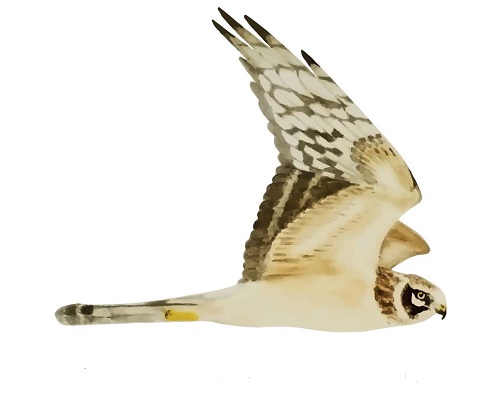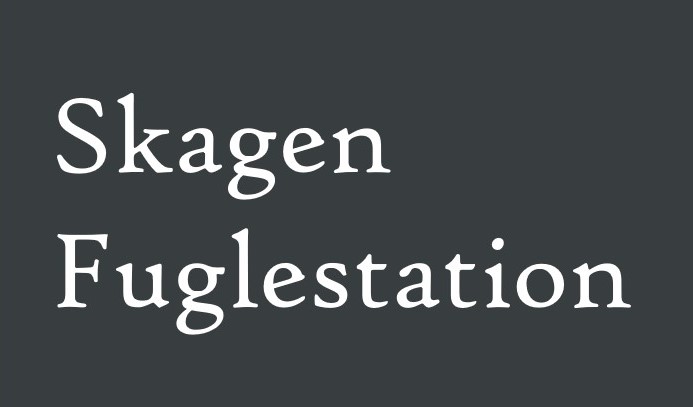Her på Skagen Fuglestations blog bringes korte nyheder i dagbogsformat om hændelser på fuglestationen.
An Unexpected Catch at the Ringing Today
Michael and I got up at 02:30 and shortly afterwards headed out to Kabeltromlen to open the ringing nets. Later, as ringing commenced, we met the Head of the Danish Ringing Centre, Anders Trøttrup, and his nephew Johan. The first round was very disappointing as we had zero birds in the nets but thankfully activity picked up in the second round. Overall, it was still relatively quiet compared to some recent days and the lack of excitement started to show through our fatigue. But all it took was a star bird on one of the rounds and we were full of life again. Despite it flying past us minutes beforehand, none of us expected to see a Green Sandpiper (Svaleklire) in one of the nets! I see Green Sandpipers quite a lot back home in south London but this was the first one I have ever seen in the hand. It was also a new species for Michael to ring. It was great to see it up close and appreciate all of the plumage details that are often only seen badly in the field.
After closing the nets Michael and I then collected a dead Roe Deer and took it back to the freezer in the lab so it can be used later on at a raptor trap. No one was on observations today but whilst ringing we also noted 4 Honey Buzzard (Hvepsevåge), 1 male Red-backed Shrike (Rødrygget Tornskade), 1 Fieldfare (Sjagger), 1 Rosefinch (Karmindompap) and 4 Crossbill (Lille Korsnæb).
Link to today's observations entered in Dofbasen.
Skagen Bird Observatory: Lisa Vergin, Michael Colley, Simon S Christiansen, Troels Eske Orlvad and Zach Pannifer
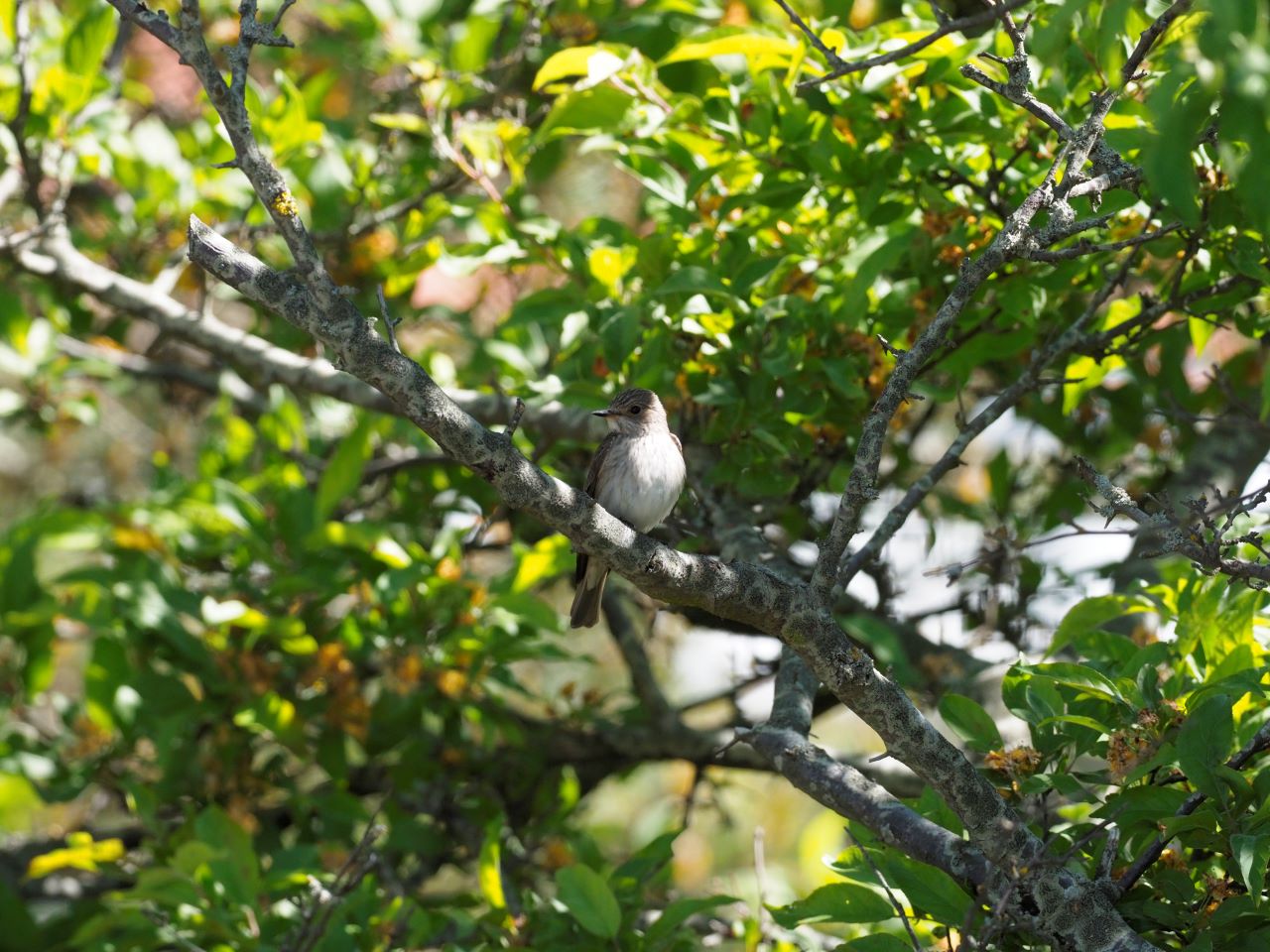
Spotted Flycatcher (Grå Fluesnapper) by Lisa Vergin
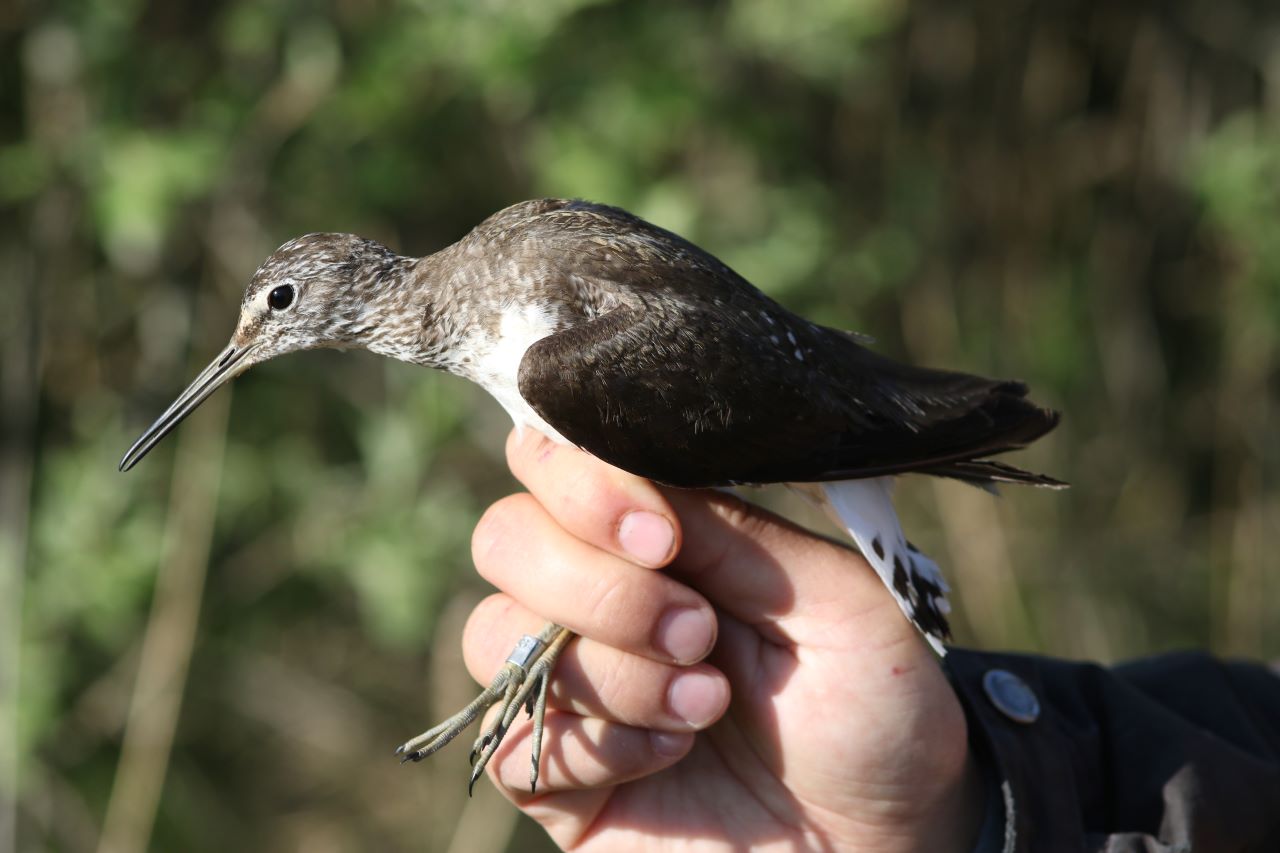
Ringing (Kabeltromlen):
Gulbug (Icterine Warbler) - 2
Løvsanger (Willow Warbler) - 3
Gærdsmutte (Wren) - 1
Rørsanger (Reed Warbler) - 1
Kærsanger (Marsh Warbler) - 1
Lille Gråsisken (Lesser Redpoll) - 3
Munk (Blackcap) - 5
Bogfinke (Chaffinch) - 2
Havesanger (Garden Warbler) - 1
Svaleklire (Green Sandpiper) - 1
Total: 20 birds
Blyth's Reed Warbler
A little windy this morning which make us of not ringing this morning and the wind was from north- south which is not always the best for birding or ringing.
This morning with no ringing, we then went to the radar to help Troels Eske Ortvad but the morning was slow with only few birds migrating. Later in the afternoon we had 4 Honey Buzzards / Hvepsevåger that migrated and it was a nice experience for Zack the new volunteer, who was at the rader for the first time. Around 14:00 we had a call from Simon that he had Blyth's Reed Warbler / Buskrørsanger singing by the tractor track, which we went to hear. You can listen to Simon recordings on Dofbasen here and here
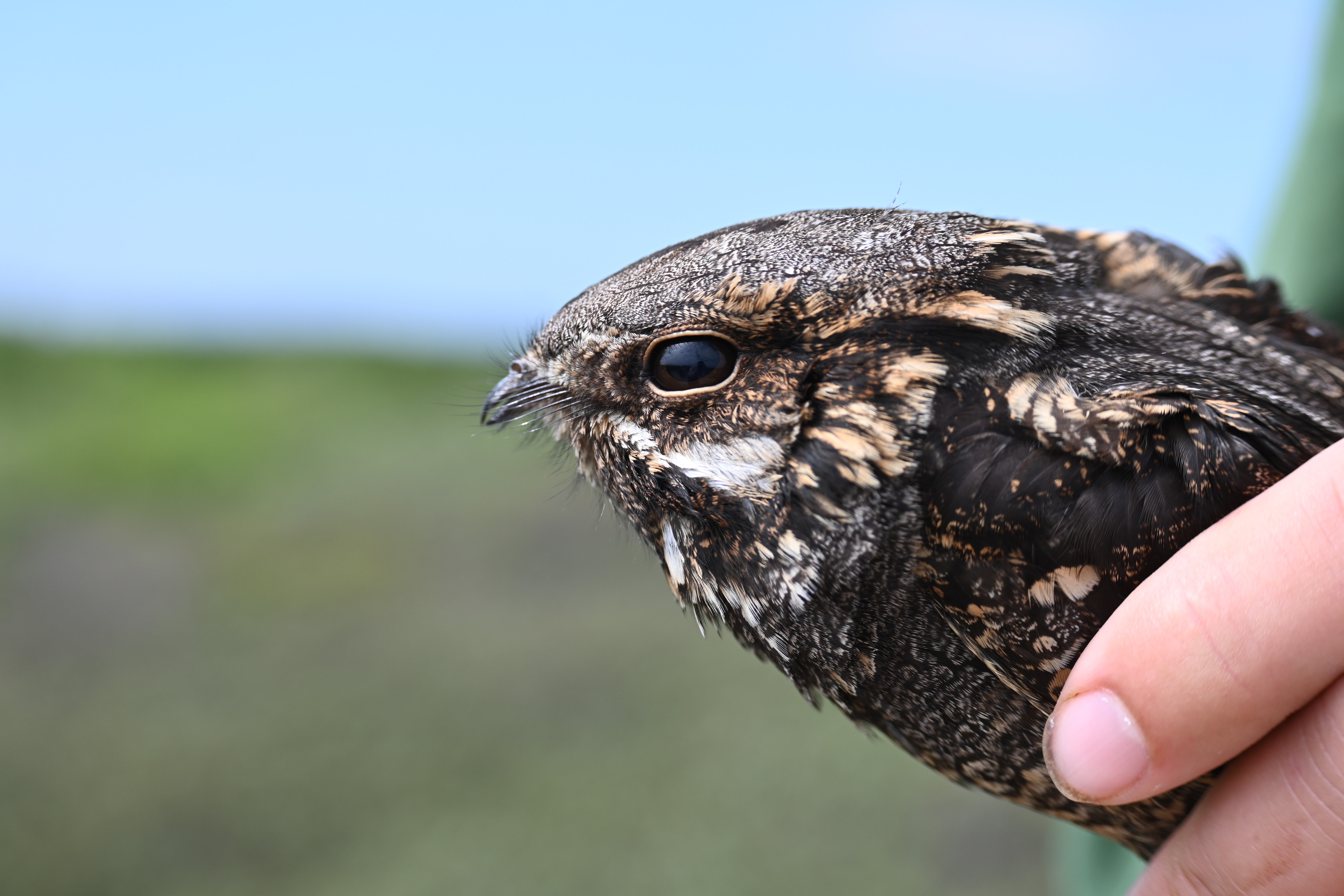
After a long day at the rader Zack cooked a delouse dinner.
A especial thanks to Jan Ejlsted, who was the former Director of Bird Life Denmark. He was our latest guest in the aparment and he has been cooking dinner for us for three nights in a row, and been writing the blog too the past days. Thanks a lot for your help!
List from the observations
Honey Buzzard / Hvepsevåge 8
Hobby / Lærkefalk 3
Common Buzzard / Musvåge 3
Sparrowhawk / Spurvehøg 3
People: Simon S. Christiansen, Zack Pannifer, Troels Eske Ortvad & Michael Colley
Første skovskade i hånden
Ringmærkeren Michael fra Gambia fik en drøm opfyldt i dag. Lige fra han ankom til Danmark har han drømt om at få en skovskade i nettet. Og det lykkedes i dag. Skovskaden var dog ikke helt tilfreds. Den gav højlydt udtryk for sin vrede og nappede da også Michael i fingeren, inden den igen blev sluppet løs i god behold. Det blev en god dag ved nettene med et bredt udvalg af arter blandt de 40 ringmærkede fugle. Forårets niende skovsanger (Wood Warbler) blev mærket, og både broget og grå fluesnapper (Pied & Spotted Flycactcher fandt også vej til Kabeltromlen. En bogfinke (Chaffinch) med britisk ring blev aflæst.
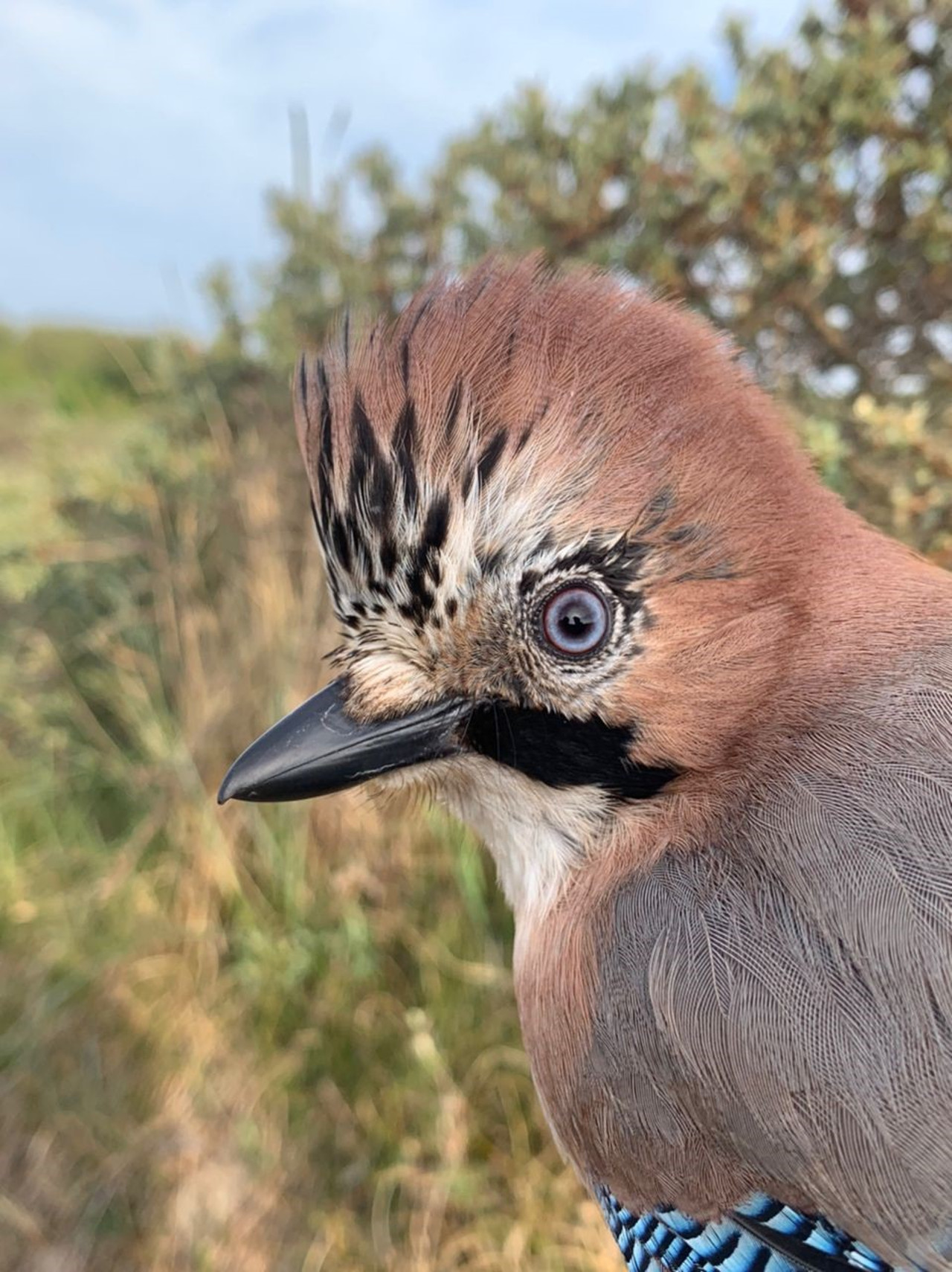 Skovskade (Jay)
Skovskade (Jay)
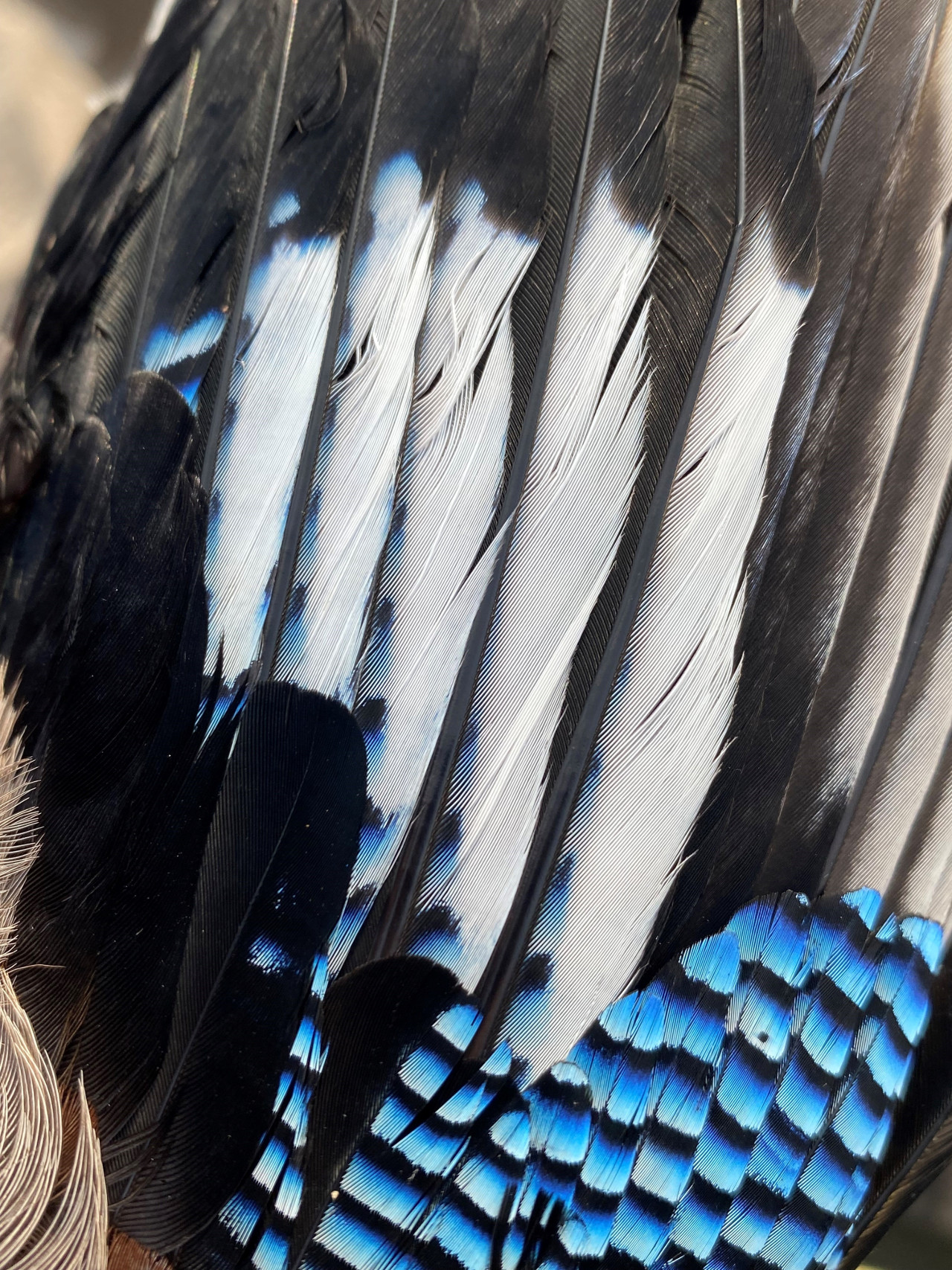 Med den farverige mønstrede vinge
Med den farverige mønstrede vinge
Senere på dagen lagde Simon og Lisa 6 fugle til, da de ringmærkede et kuld Musvit-unger (Great Tit) i egen have. Holdet var travlt optaget af ringmærkning igennem dagen, men Zach fik da bl.a. set 2 sorte glenter (Black Kite) i en blandet rovfugleskrue sammen med Musvåger (Common Buzzard), Hvepsevåger (Honey Buzzard) og Røde Glenter (Red Kite).
Aftenen gik med indstastning og kvalitetscheck af ringmærkningsdata, og med at indtaste nogle dagssummeringer af rovfugle fra dage tidligere i maj. På vej til fyret hentede Simon en rudedræbt havesanger til fryseren i haven hos Jan Jansen. Magnus Mygind fra Det Grå Fyr fulgte os en del af dagen både i felten og tilbage på stationen.
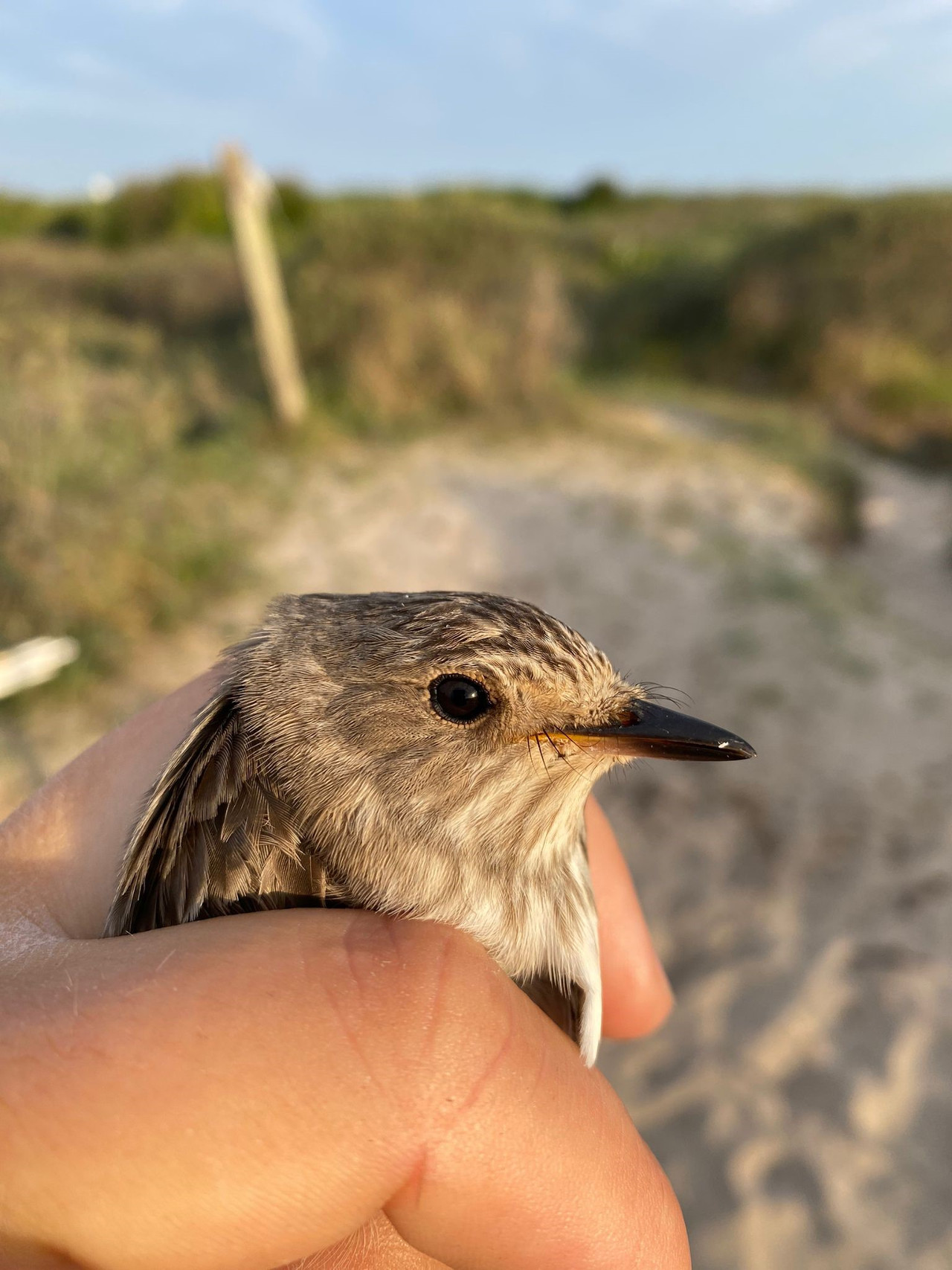 Grå Fluesnapper (Spotted Flycatcher)
Grå Fluesnapper (Spotted Flycatcher)
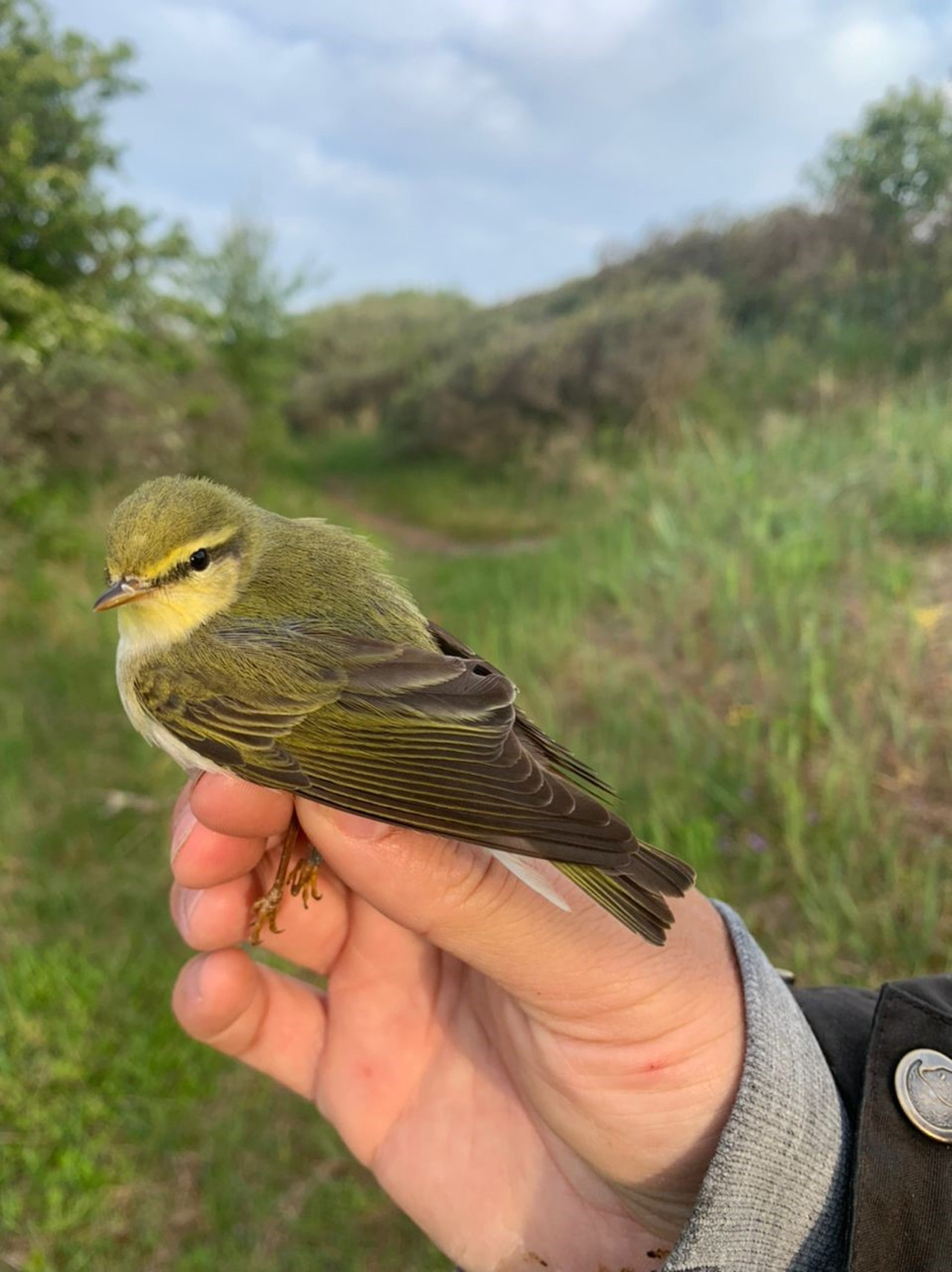 Skovsanger (Wood Warbler)
Skovsanger (Wood Warbler)
Jeg slutter mit ophold på fuglestationen torsdag og takker for en god oplevelse med en superdedikeret stab under Simons kyndige ledelse.
Folk: Michael Colley, Zach Pannifer, Simon S. Christiansen, Lisa Vergin, Magnus Mygind & Jan Ejlsted.
Ringmærkning (Kabeltromlen):
Skovskade (Jay) 1
Solsort (Blackbird) 1
Broget fluesnapper (Pied Flycatcher) 1
Grå Fluesnapper (Spotted Flycatcher) 2
Kærsanger (Marsh Warbler) 3
Løvsanger (Willow Warbler) 10
Gulbug (Icterine Warbler) 1
Rørsanger (Reed Warbler) 3
Skovsanger (Wood Warbler) 1
Munk (Blackcap) 2
Havesanger (Garden Warbler) 7
Bogfinke (Chaffinch) 4
Dompap (Bullfinch) 2
Tornsanger (Lesser Whitethroat) 1
Gransanger (Chiffchaff) 1
Ringmærkning (Minervavej):
Musvit: 6 pullus
Total: 46
18-årig debuterer som ringmærker
Den 18-årige britiske ornitolog Zach fik sin debut som ringmærker ude ved Kabeltromlen i dag. Aldrig før havde han haft en vild fugl i hånden, og han gik til opgaven med både ydmyghed og kæmpe interesse for at lære nyt. Vi gætter på, at han har en stor fremtid for sig som både fuglekigger og ringmærker. Zach bliver hos os indtil udgangen af juni.
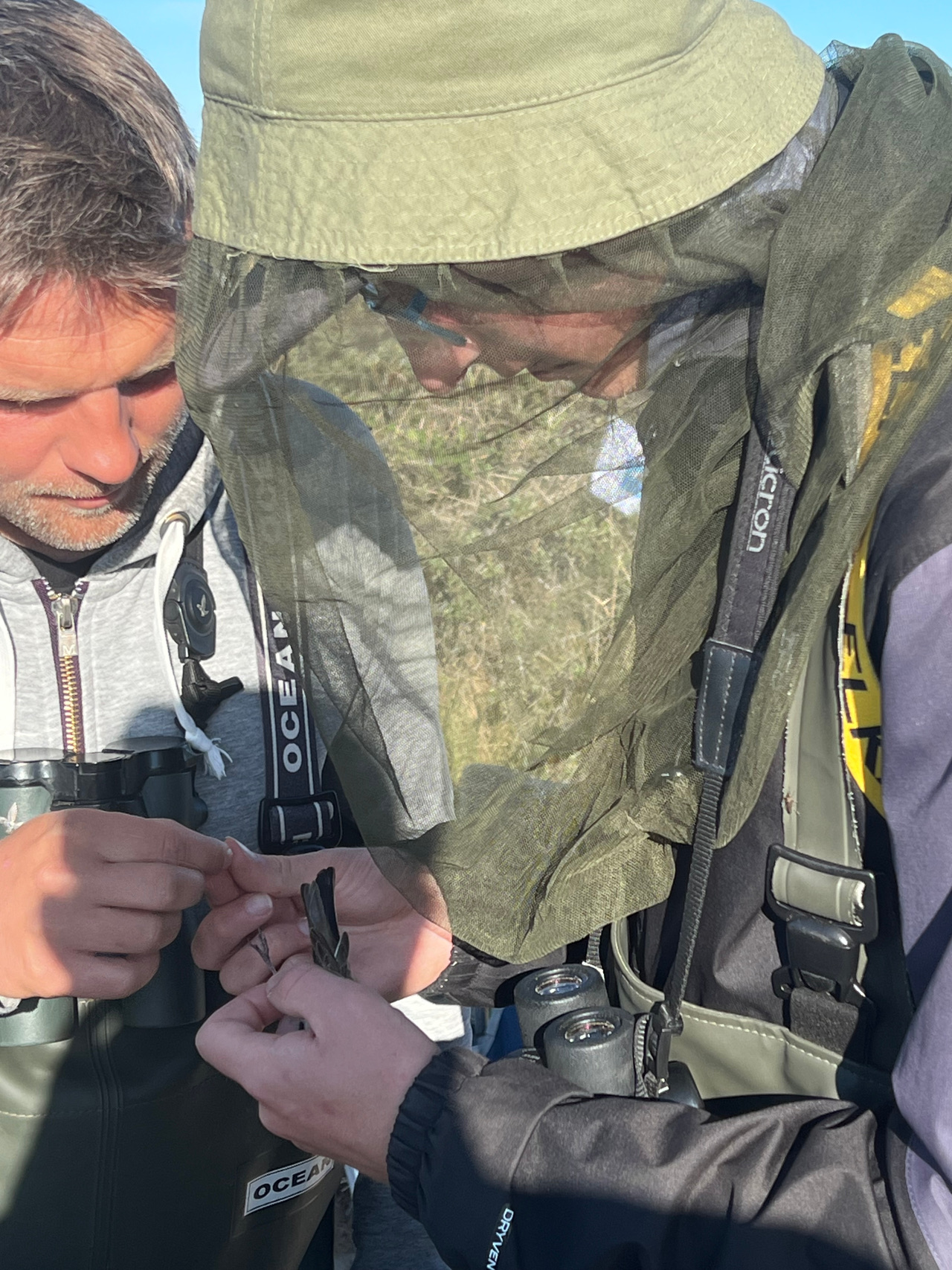
I løbet af morgenen savede vi flere havtorn væk omkring Kabeltromlen, så der nu er endnu bedre udsyn til de fuglekiggere der gæster os. Fuglestationen eksperimenterer fortsat med at GPS-mærke rovfugle. Lige nu har vi en fælde ude syd for Skagen. Og senest har vi lagt en fasan med tilhørende vildtkamera ud i klitterne ml. Nordstranden og Verdens Ende. Hvis det lykkes at tiltrække rovfugle, vil vi sætte en rigtig fælde op. Allerede få timer efter etableringen af kameraet, kom der signal fra klitterne. Kameraet havde set noget – som viste sig at være en hare!
I alt 26 fugle blev det til ved Kabeltromlen denne morgen. I tillæg til ringmærkningen tog Troels Eske Ortvad fra Københavns Universitet blodprøver fra 8 Afrika-trækkende småfugle med henblik på at finde ud af, om de bærer på Vestnil-virus eller Usutu-virus. Vestnil-virus er en malaria-lignende sygdom, der bl.a. forekommer hos mennesker. Usutu-virus forekommer også hos mennesker, men er herhjemme mest kendt for at forårsage massedød blandt solsorte.
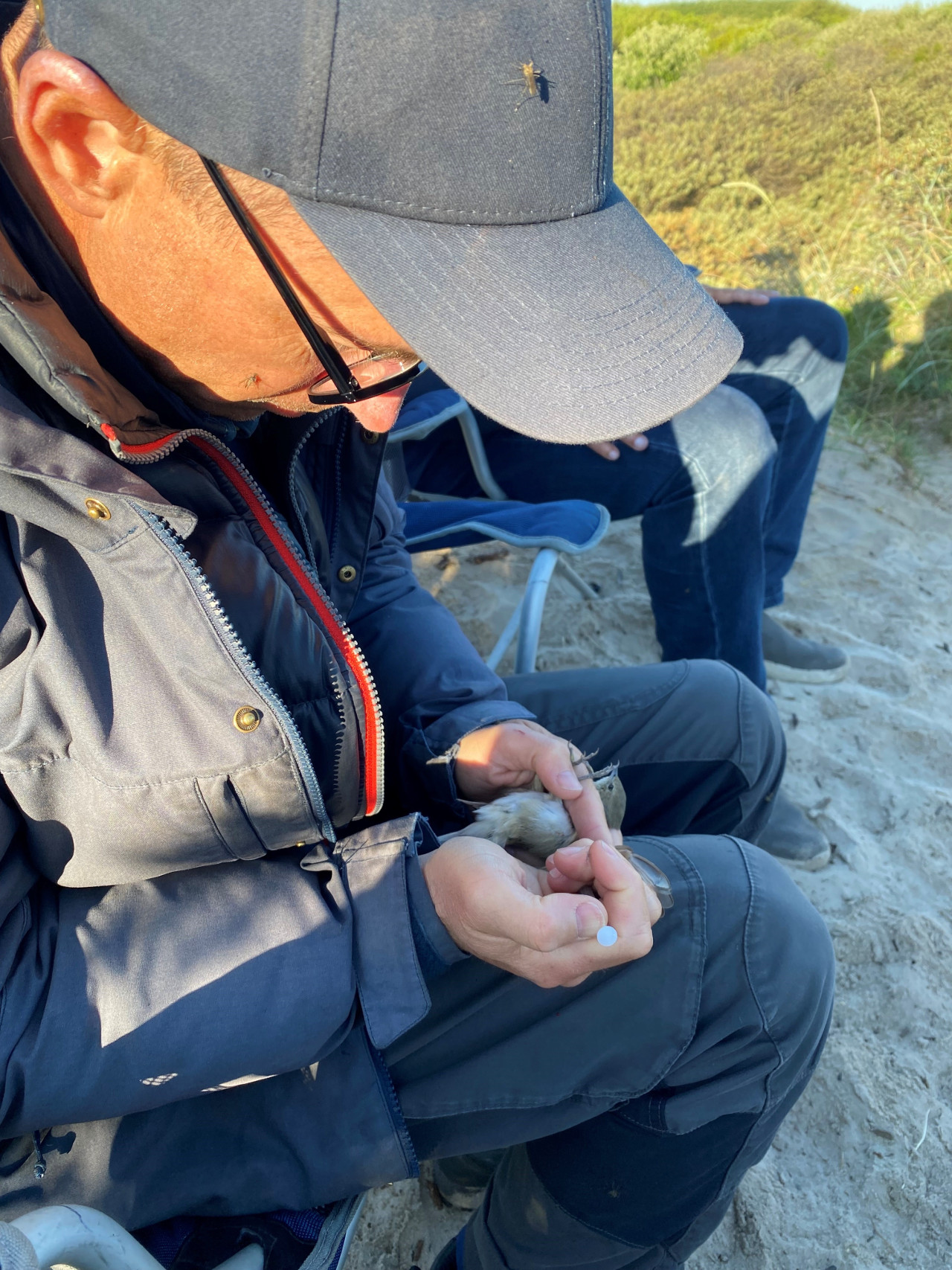
Vejret var lunt og vinden var jævn. Så der var egentlig gode muligheder for rovfugletræk. Der var da også små skruer af Musvåger (Common Buzzard) i luften. Ud på eftermiddagen hørte vi om en Lille Skrigeørn (Lesser Spotted Eagle), der trak ud fra Grenen. Set af Troels Eske Ortvad. Og et par timer senere meldte Alex Sand Frich om et kortvarigt møde med en Blå Glente (Black-winged Kite) syd for Skagen. Trods fuldt fokus på dagens ringmærkning kunne vi alligevel notere 1 Fiskeørn (Osprey) og 5 Hvepsevåger (Honey Buzzard).
Link til dagens observationer indtastet i Dofbasen
Folk: Michael Colly, Zach Pannifer, Simon S. Christiansen, Troels Eske Ortvad & Jan Ejlsted.
Ringmærkning (Kabeltromlen):
Gransanger (Chiffchaff) 3
Tornsanger (Lesser Whitethroat) 5
Havesanger (Garden Warbler) 4
Løvsanger (Willow Warbler) 5
Rørsanger (Reed Warbler) 1
Bogfinke (Chaffinch) 5
Munk (Blackcap) 5
Total: 26
Kølig nordvestenvinds morgen
Med vind fra vest og nordvest fortsatte den seneste tids svage træk-aktivitet. Zach var på obsposten og noterede blandt andet en enkelt Islom trækkende NV sammen med en Rødstrubet Lom (Red-throated Diver), omkring 100 Mallemukker (Fulmar) over Revet, tre trækkende Hvepsevåger (Honey Buzzard), en Rødrygget Tornskade (Red-backed Shrike) og to Lille Korsnæb (Red Crossbill).
19 ringmærkede fugle blev det til ved Kabeltromlen, alle almindelige arter. Nettene blev lukket ned ved 10-tiden, da der kun blev fanget ganske få fugle på hver netrunde.
Mod slutningen spottede Simon en Ringdrossel (Ring Ouzel), der tronede højt i en busk i nærheden.
Mandag blev også Chloe’s sidste dag på stationen. Tirsdag morgen kører hun de 1500 km hjem til Frankrig. Og senere på året drager hun til den sydlige halvkugle for at arbejde med pingviner. Vi sagde pænt farvel med en ærkedansk dessert: Jordbær med fløde!
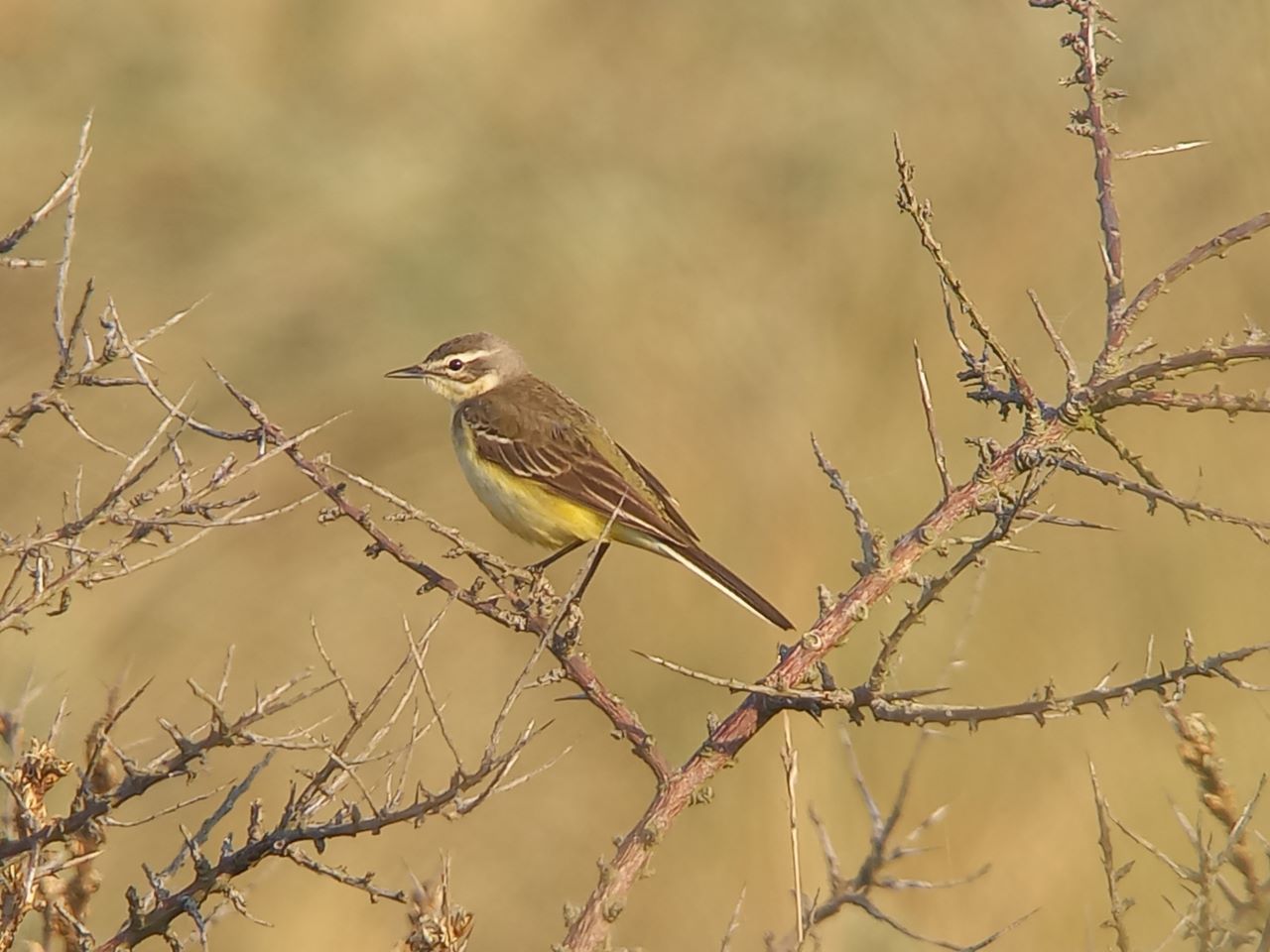 Hun Gul Vipstjert (Yellow Wagtail). Foto: Zach Pannifer
Hun Gul Vipstjert (Yellow Wagtail). Foto: Zach Pannifer
Link til dagens observationer indtastet i dofbasen
Folk: Zach Pannifer, Cloé Meymy, Michael Colley, Simon S. Christiansen & Jan Ejlsted
Ringmærkning (Kabeltromlen):
Rødhals (Robin) 1
Gærdesanger (Lesser Whitethroat) 3
Løvsanger (Willow Warbler) 7
Jernspurv (Dunnock) 1
Havesanger (Garden Warbler) 3
Bogfinke (Chaffinch) 2
Munk (Blackcap) 1
Rørsanger (Reed Warbler) 1
Total: 19
Windy Day and a GPS Tagged Buzzard
Strong blustery winds battered the area all day and meant that no ringing took place this morning. However, I still headed to World's End for observation. Other than a Great Skua [Storkjove] and a Great Northern Diver [Islom] that were seen by other birders, the seawatching was quiet compared to past days. Thankfully later in the morning things started to improve when a female Honey Buzzard [Hvepsevåge] and several active Common Buzzard [Musvåge] appeared. I also managed to see my first ever Black Kite [Sort Glente] and it was joined by a Red Kite [Rød Glente] so I had good comparison views. Also 2 Fieldfare [Sjagger] flew past, as well as a male Rosefinch [Karmindompap] and a Corn Bunting [Bomlæke]. On my way back to the observatory I had a close singing Icterine Warbler [Gulbug] and also a Marsh Warbler [Kærsanger].
When I got back to the observatory Michael informed me that a Buzzard [Musvåge] had been caught at a raptor trap and that Simon was going to take us to see it, ring it and add a GPS tag. It was the first Buzzard [Musvåge] that Michael has ringed. It was also great to meet Carlo Pedersen, and see how he manages parts of the site for nature. Whilst adding the GPS tag we also noted a singing male Common Redstart [Rødstjert], Tree Sparrow [Skovspurv], Bullfinch [Dompap] and Crossbill [Lille Kornæb].
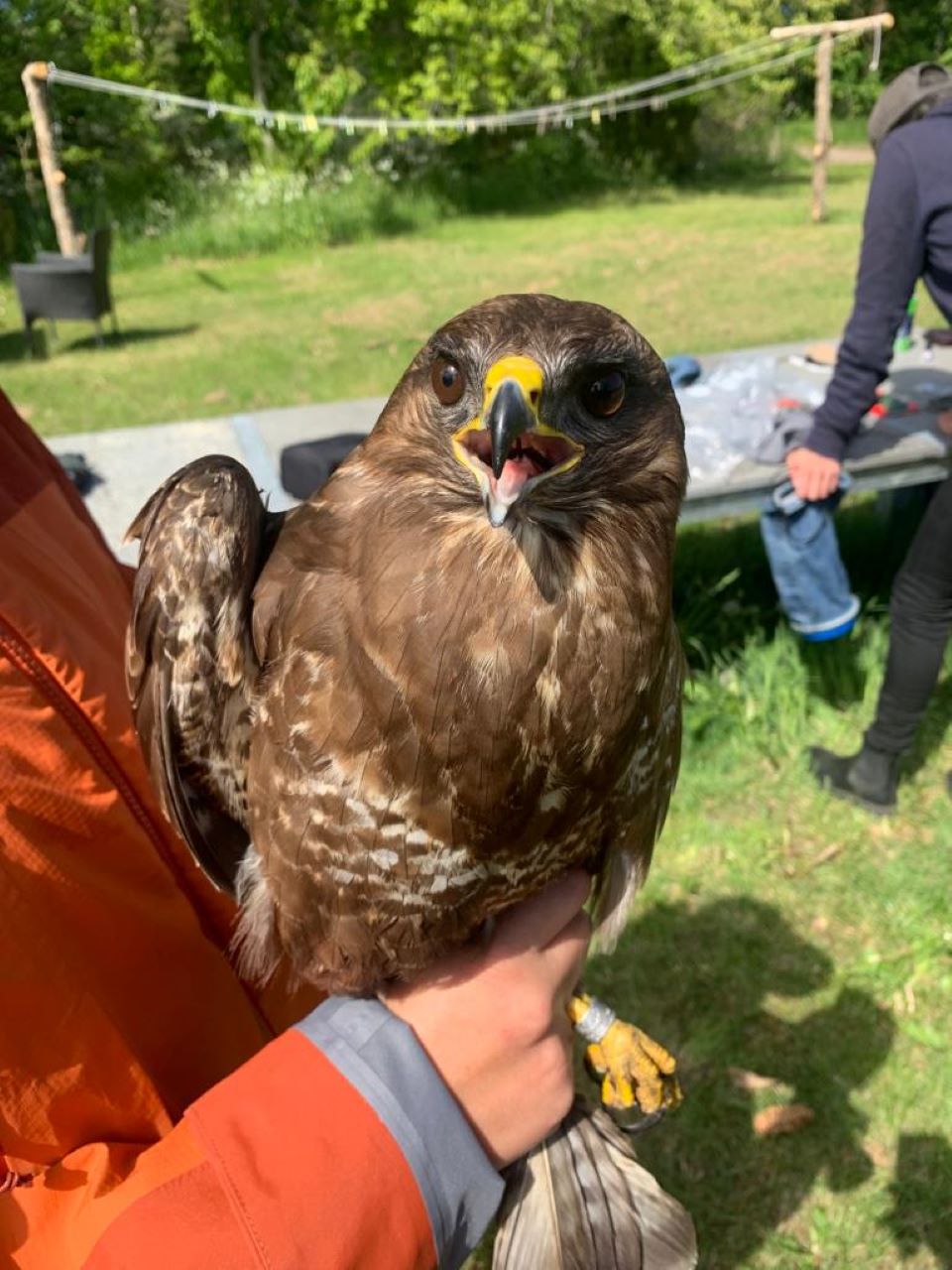 Buzzard [Hvepsevåge] being ringed and GPS tagged
Buzzard [Hvepsevåge] being ringed and GPS tagged
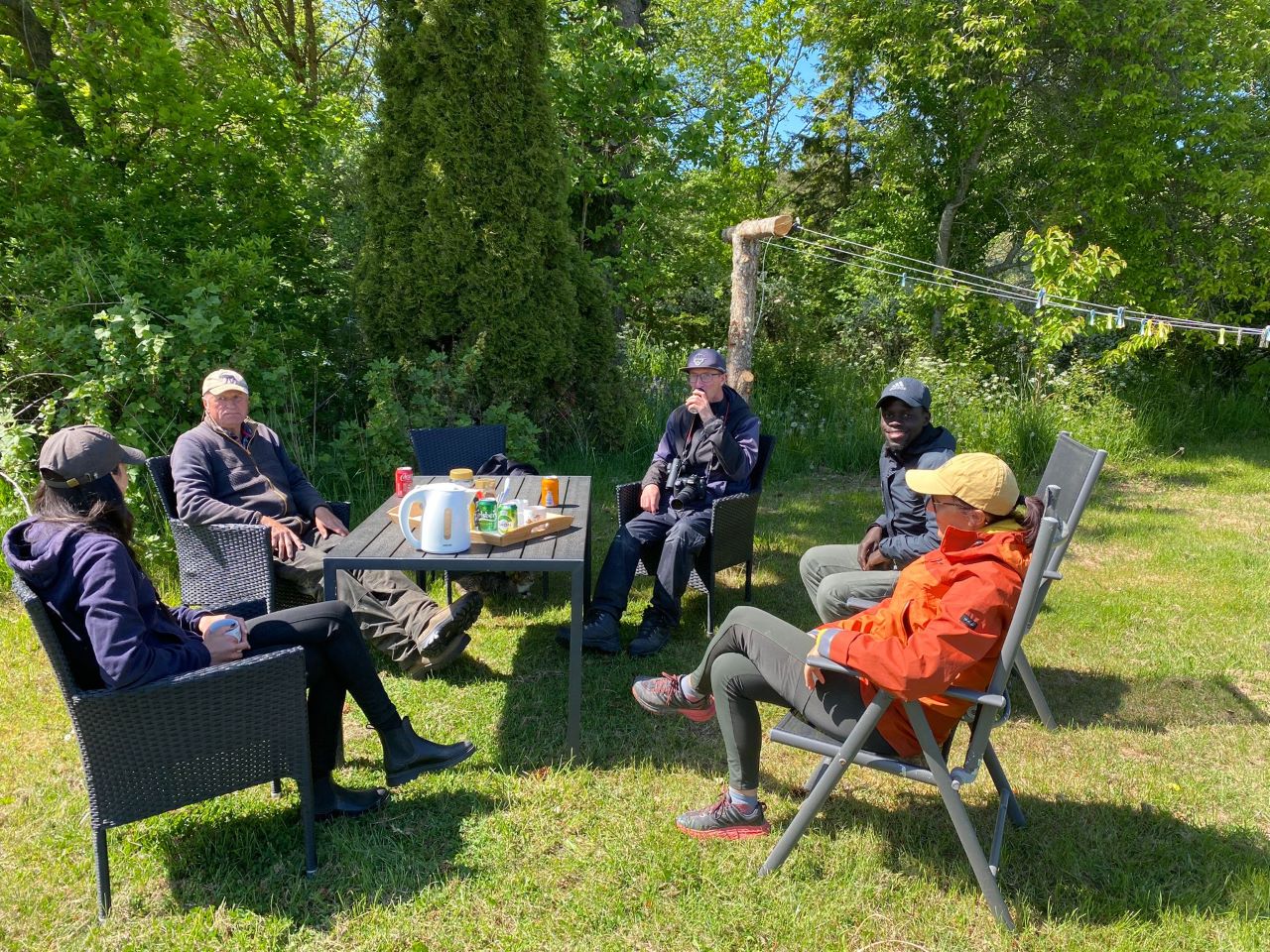
Group enjoying some refreshments after a successful raptor ringing
Jan Ejlsted arived at the apartment after Søren and Karen Marie left this morning.
A full list of today's observations can be found here.
People: Chloé Meymy, Lisa Vergin, Michael Colley, Simon S. Christiansen, Jan Ejlsted and Zach Pannifer
Ringing (Tversted):
Musvåge (Common Buzzard): 1
Total: 1
Bogfinker, vipstjerter og – næsten – en Lille Skrigeørn
Fotos: Søren Leth-Nissen.
Zach begyndte dagen på observationsposten, hvor denne uges lidt sløve træk fortsatte. Nogle af fundene var Almindelig Kjove (Arctic Skua), 2 Hvepsevåge (Honey Buzzard), 24 Musvåger (Buzzards), og en Bomlærke (Corn Bunting).
Chloe, Michael og Simon åbnede nettene før solopgang, og det blev en rigtig god dag for ringmærkningen, med 44 ringmærkede fugle, 6 genfangster, og i det hele taget med bred diversitet og en del forskellige arter, bl.a. mange bogfinker og gulbug.
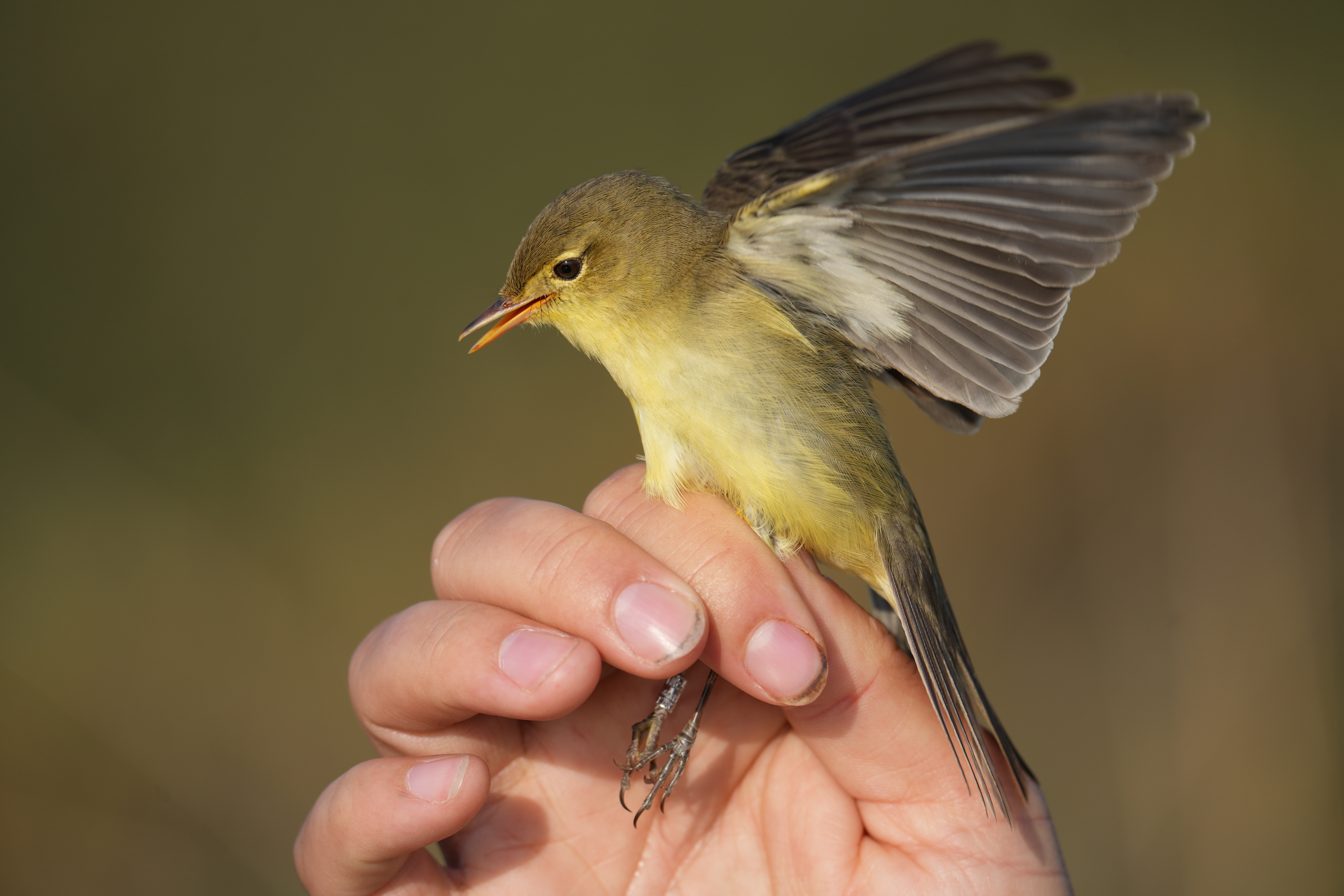
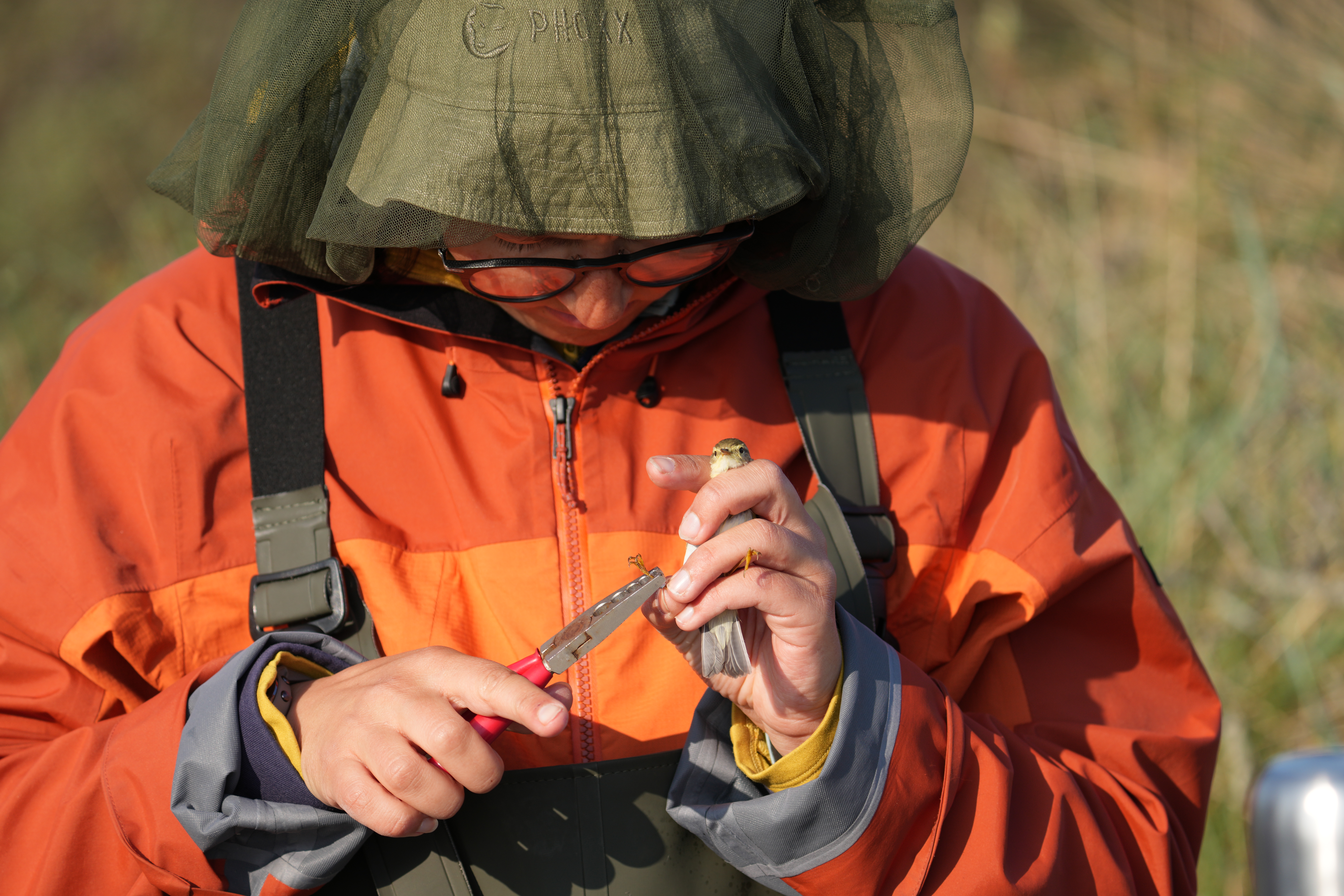
Chloe fik sin første udfarvede Gulspurv i nettet.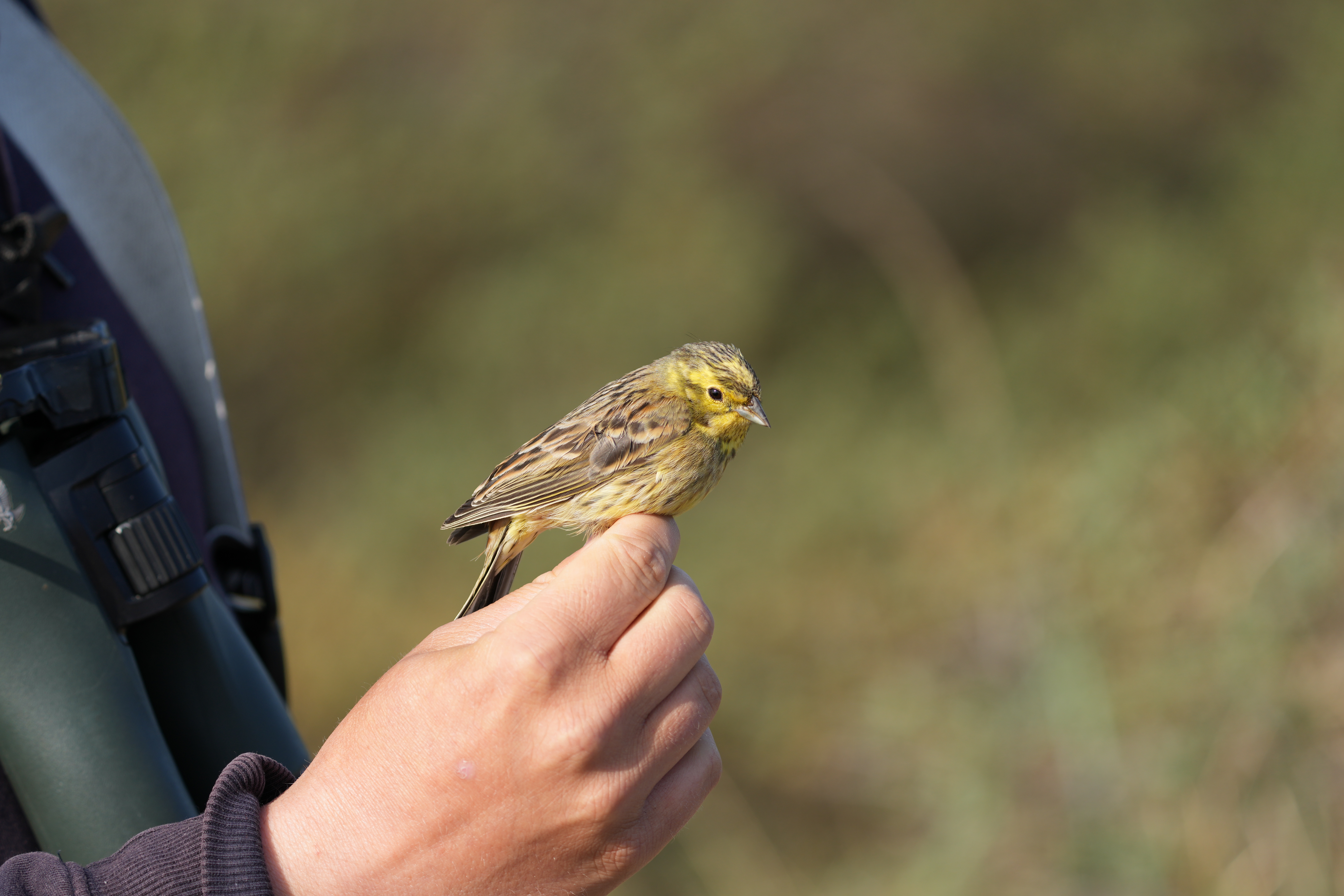
Fuglen var den anden gulspurv i sæsonen, men den første var en genfangst, så denne var første nymærkning.
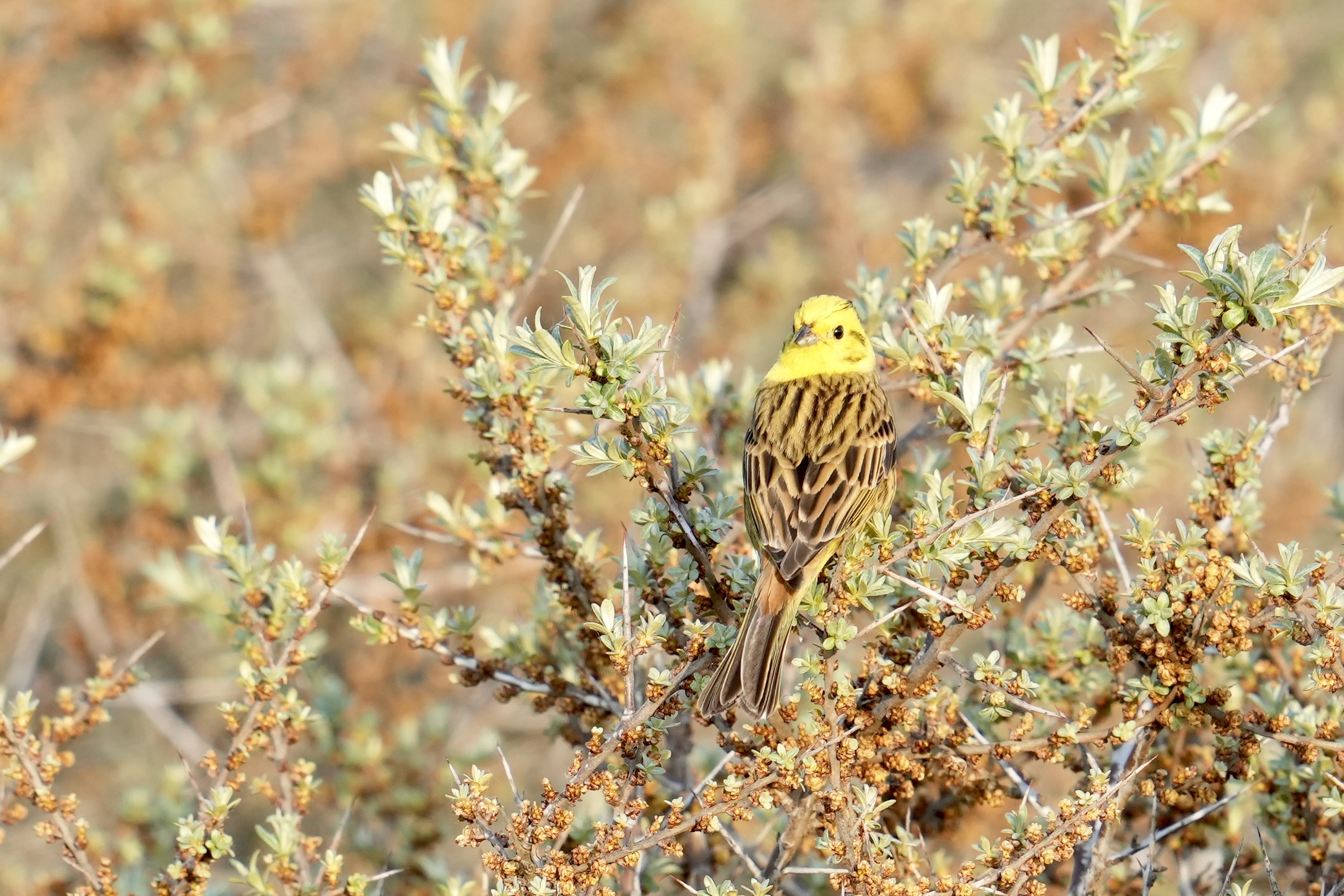
Søren og jeg var med fra kl. 6.00, og fra Kabeltromlen var vi med til at spotte en Rødrygget Tornskade (Red-backed Shrike) med mad i munden.
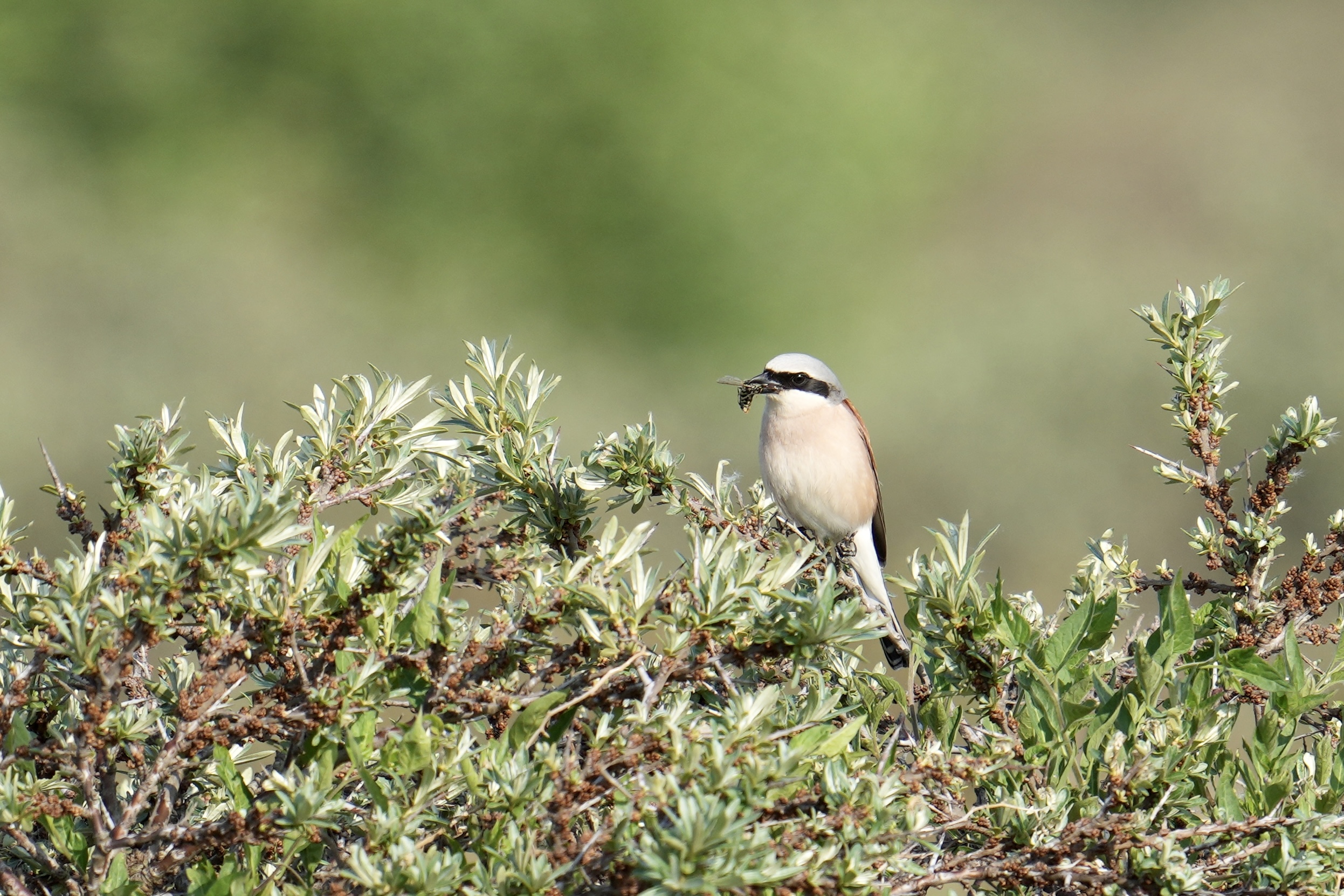
En lys Hvepsevåge (Honey Buzzard) kom også forbi.
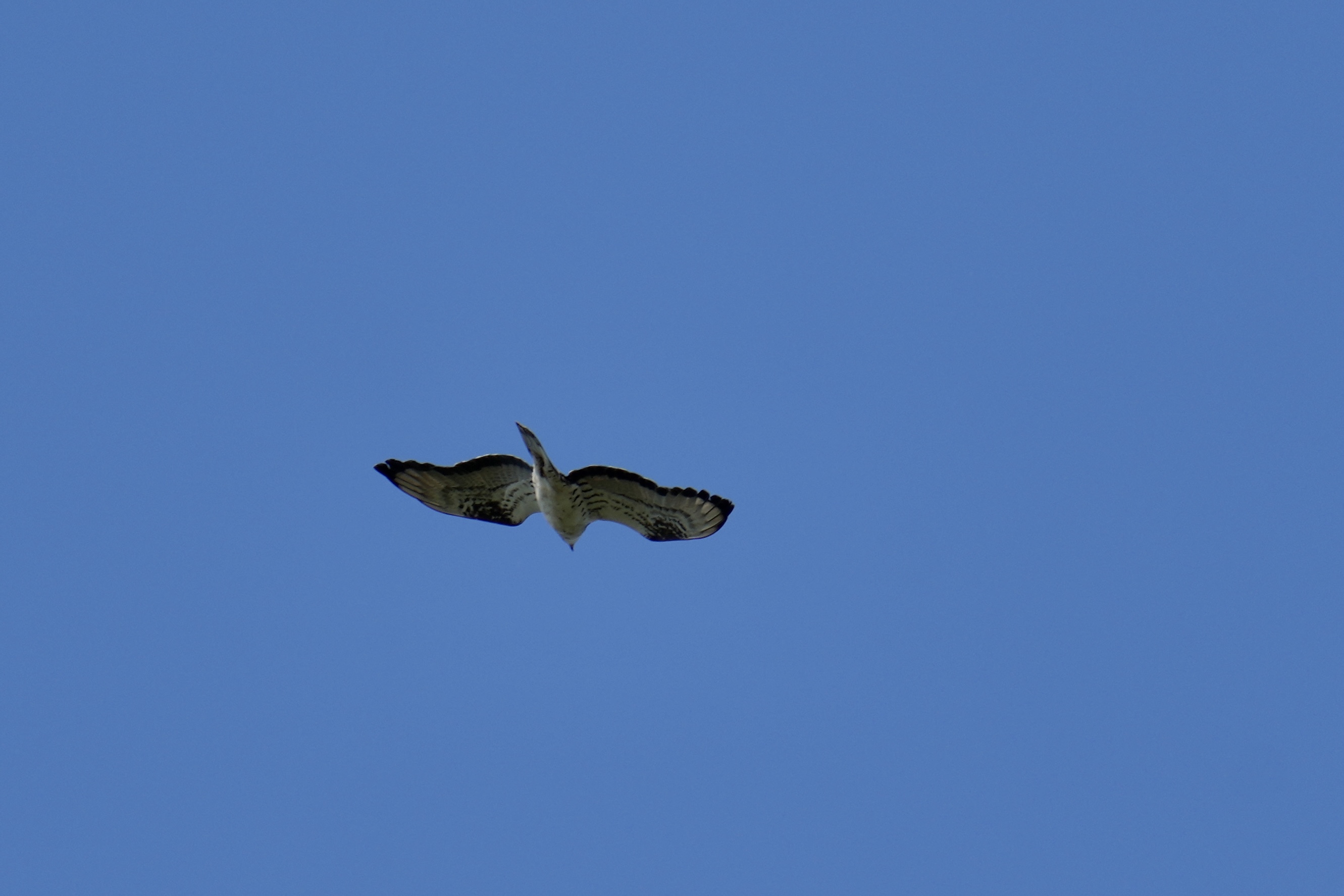
Vi så også en smuk udfarvet Blå Kærhøg (Pallid Harrier).
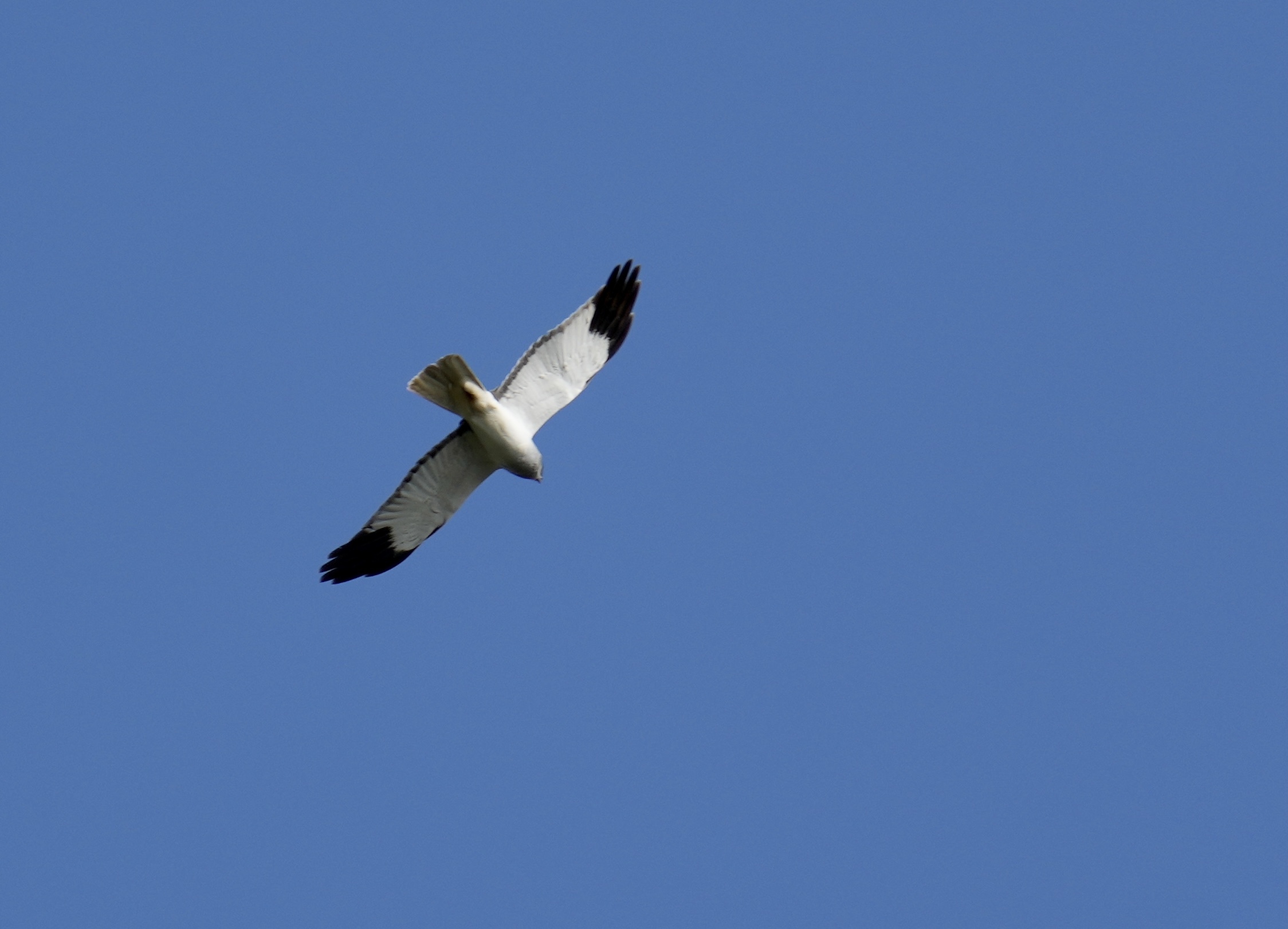
Gøgen kom også forbi en tur.
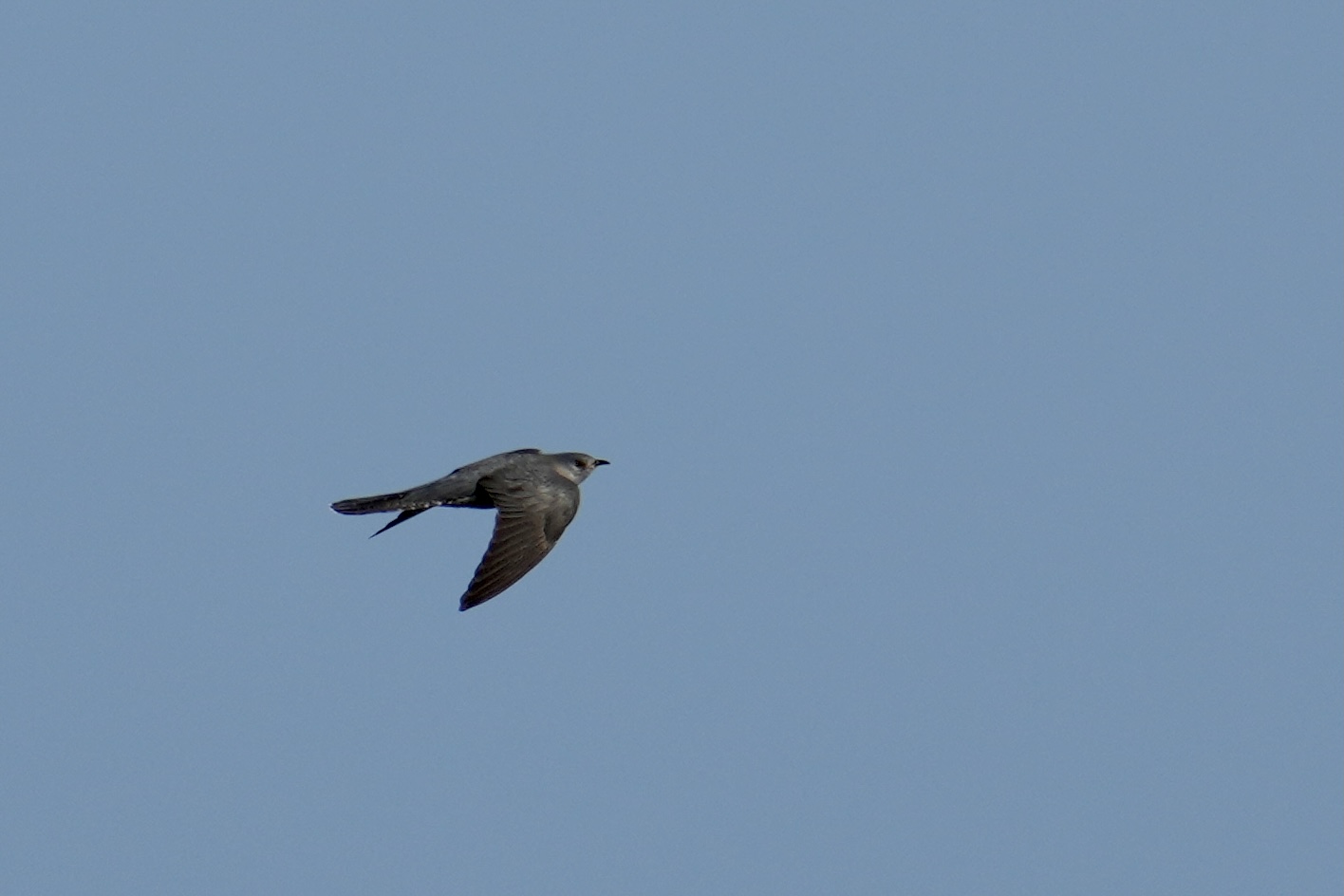
Chloe gik en lang tur om eftermiddagen, rundt i området. Michael, Søren og jeg tog på en lille rundtur, først til Saftevandsbakken, hvor en Lille Skrigeørn var set en tid forinden. Vi havde ikke det store håb om at nå at se den, for den var allerede i Hulsig, da vi nåede frem. Men måske noget andet godt ville dukke op? Der kom en del rovfugle, mest Musvåger (Common Buzzard), og vi valgte i stedet at tage en tur til et par af Simons gode steder. Først til Buttervej Industrikvarter, hvor vi bl.a. så Tornirisk (Linnet), Hvid vipstjert (White Wagtail) og Gul Vipstjert (Yellow Wagtail).
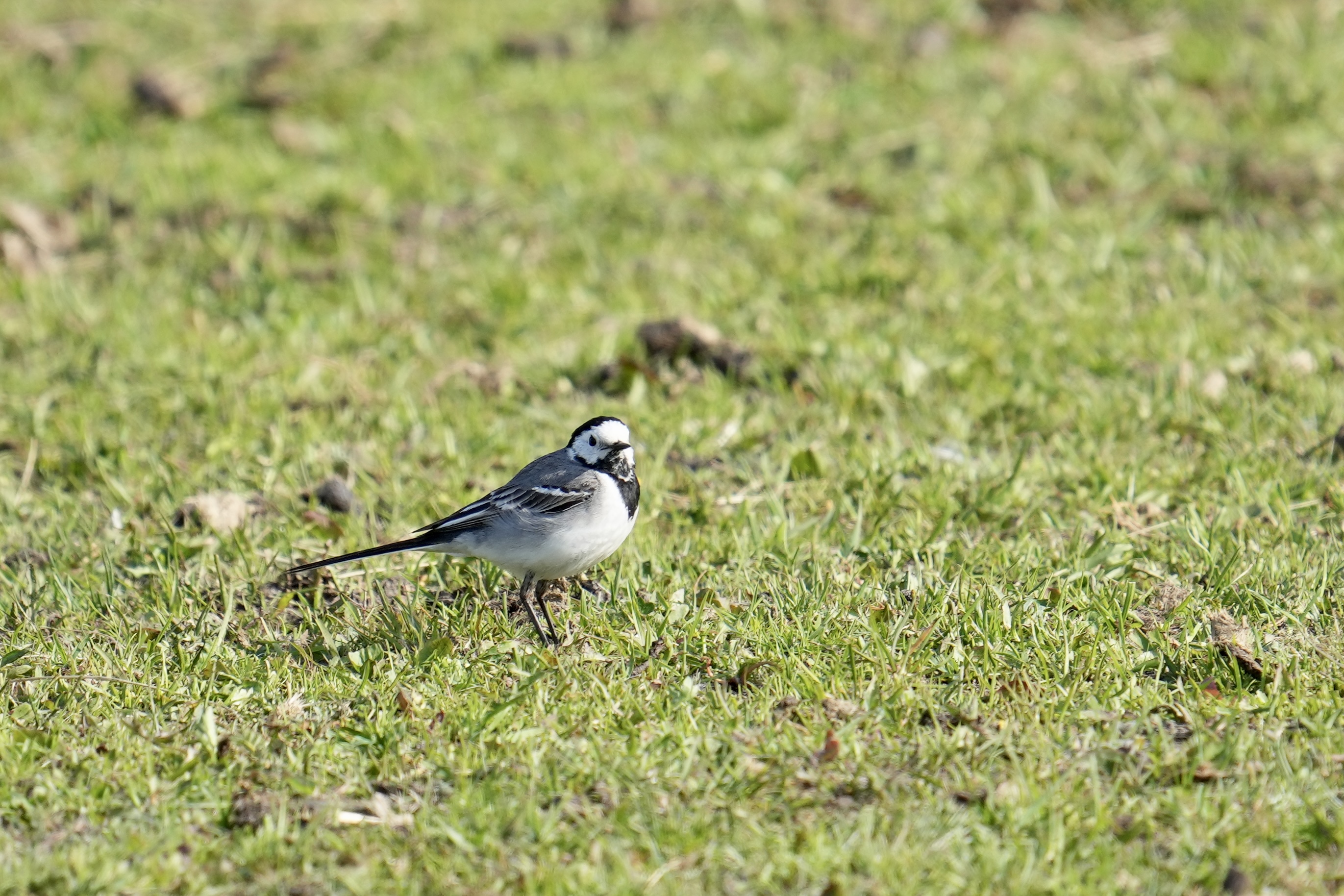
Ved Stald Grenen hørte vi Grønirisk (Greenfinch), Karmindompap (Rosefinch) og Fuglekonge (Goldcrest), som var Zachs første. Vi sluttede af med Grå Fluesnapper ved Nordstjernevej og Sortbrystet Bynkefugl ved det sorte sommerhus på Fyrvej.
Da vi kom tilbage, stod Zach for aftensmad på stationen – mmm :-)
Alt I alt en rigtig dejlig dag med ringmærkning, observationer, vandretur og spot på nye steder. Tak for denne gang, og velkommen til stationens nye gæst fra i morgen.
Link til dagens observationer.
Skagen Fuglestation: Chloe Meymy, Michael Colley, Zach Pannifer, Simon S. Christiansen, Søren og Karen Marie Leth-Nissen.
Lærkernes dag
I dag var det lærkernes dag.
(Fotos: Søren Leth-Nissen)

Vejrudsigten meldte hård blæst fra nordvest, så ringmærkningen var aflyst. Det gav hele stationen mulighed for at tage på fællestur til naturreservatet ved Gerå enge og Asaa, syd for Sæby. Stor tak til Oluf Lou for at lægge bil til og være guide for på hele turen.
Vi var spændte på, om der stadig - så sent på sæsonen - var rastende vadefugle på stedet. DOFbasen har meldt om vadefugle i store mængder indtil for få dage siden, men da vi ankom til engene, var fuglene fløjet.
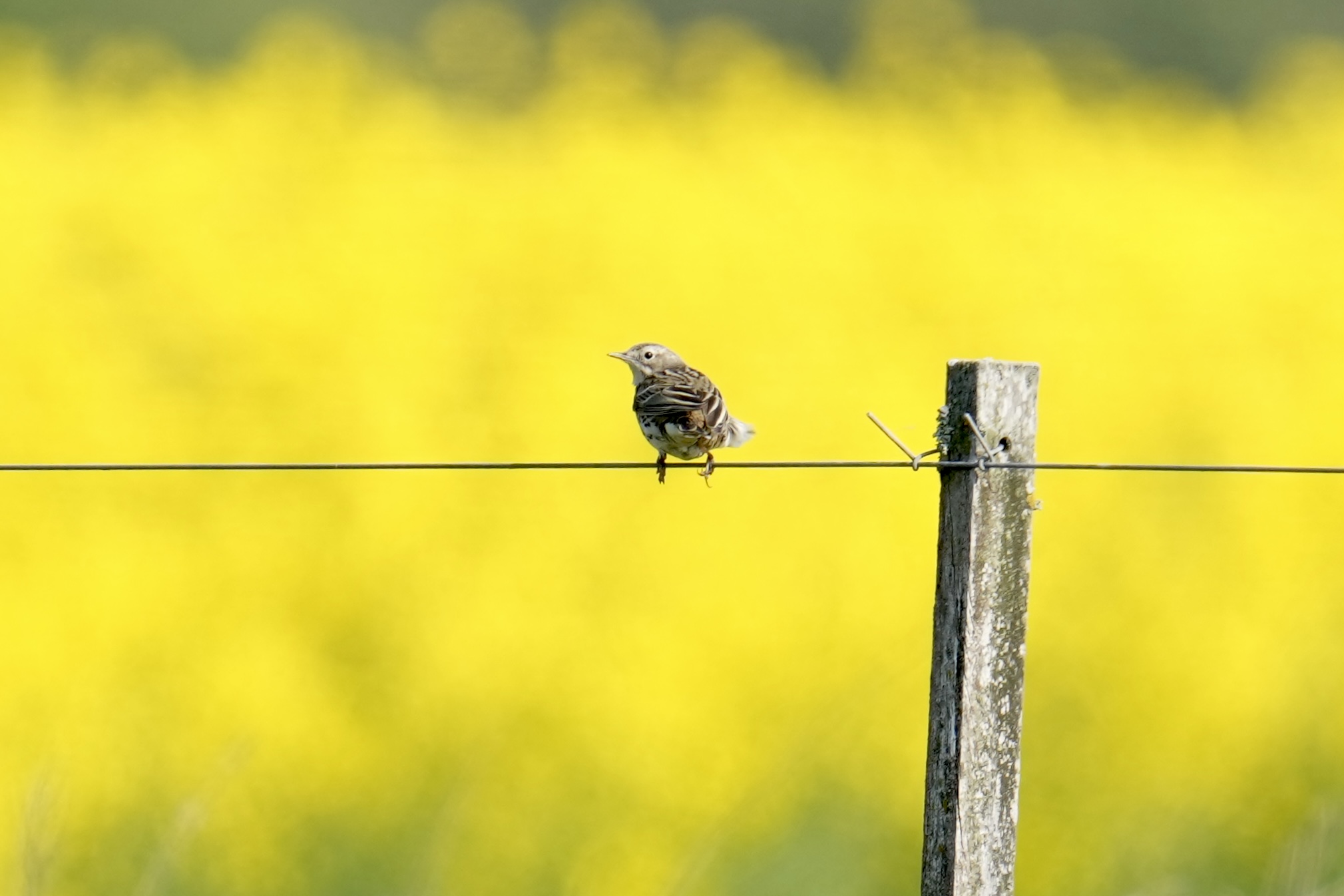
Vi nød i stedet de mange Sanglærker (Skylark), som yngler ved engene, forsvarer deres territorier og hænger storsyngende under den blå himmel.
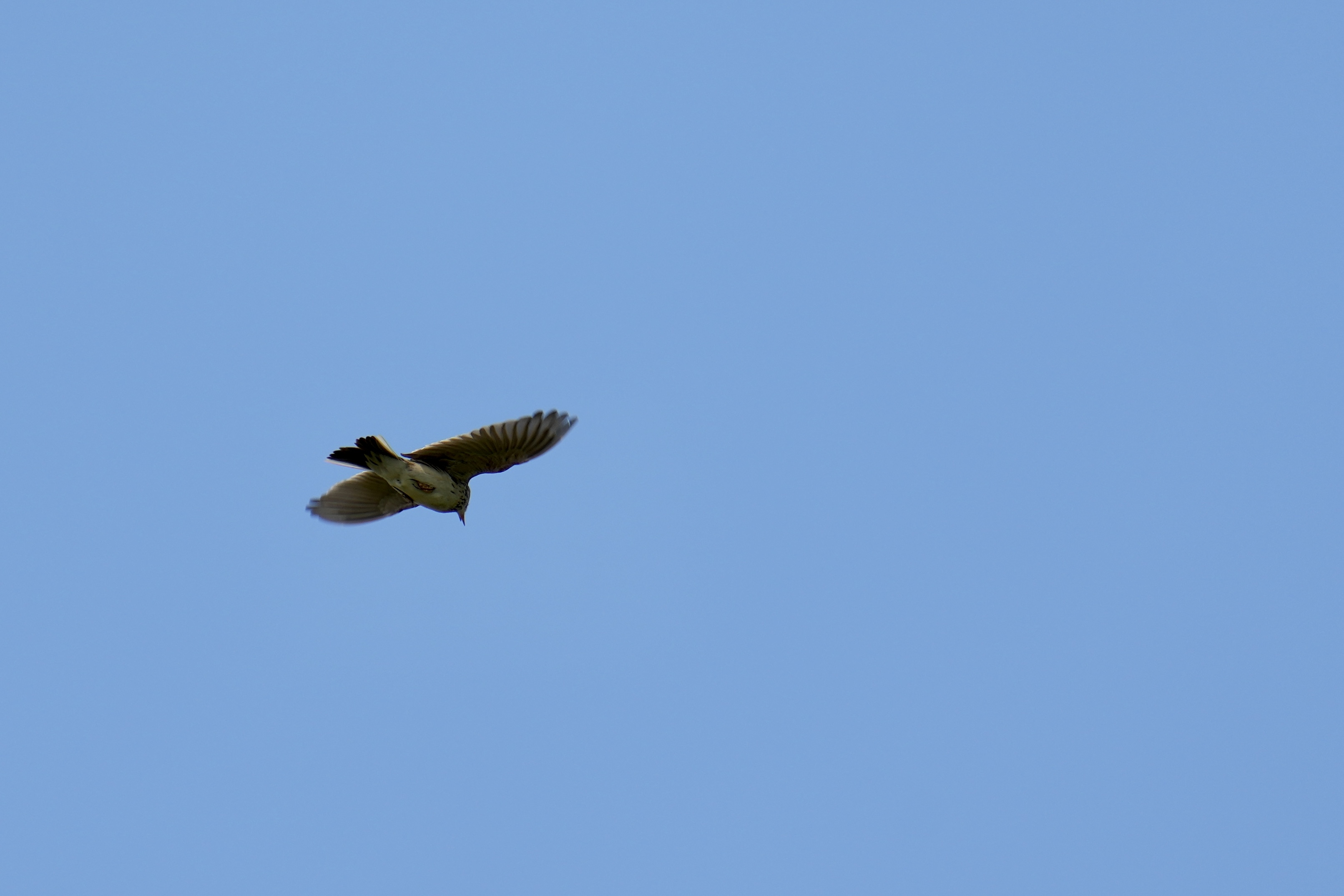
Vi så også flokke af Gravænder (Shellduck), 2 Viber (Lapwing), 2 Hvidklirer (Greenshank), 2 Rødben (Redshank) og en lile flok på 15 Almindelig Ryle (Dunlin), - måske de sidste af de mange, som har rastet her før de drog nordpå?
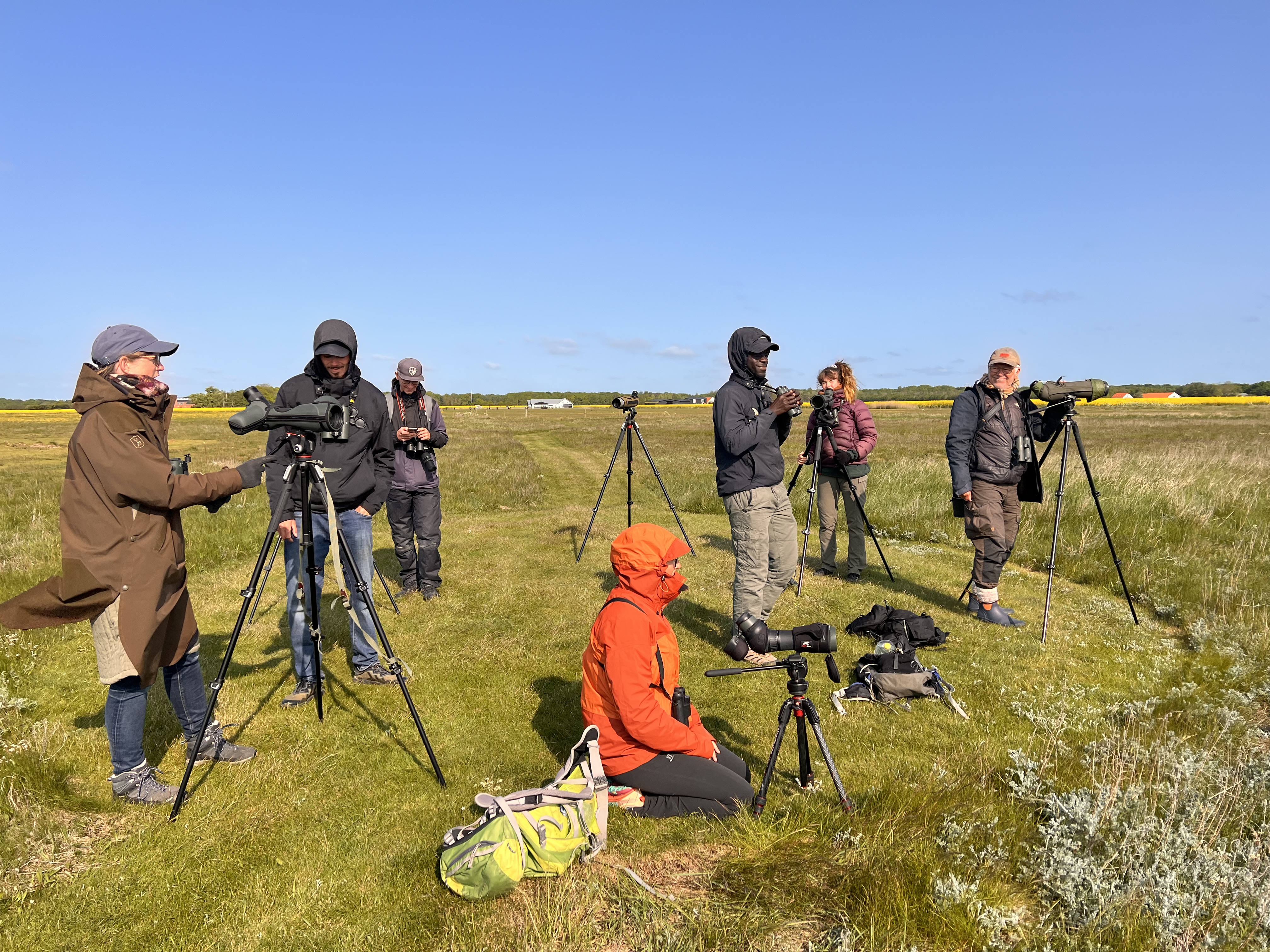
På vej tilbage mod Skagen gjorde vi holdt i Asaa havn, hvor de fleste af os registrerede en ny første: rejer, som for flere af de frivillige var en overraskelse at se i vandet.
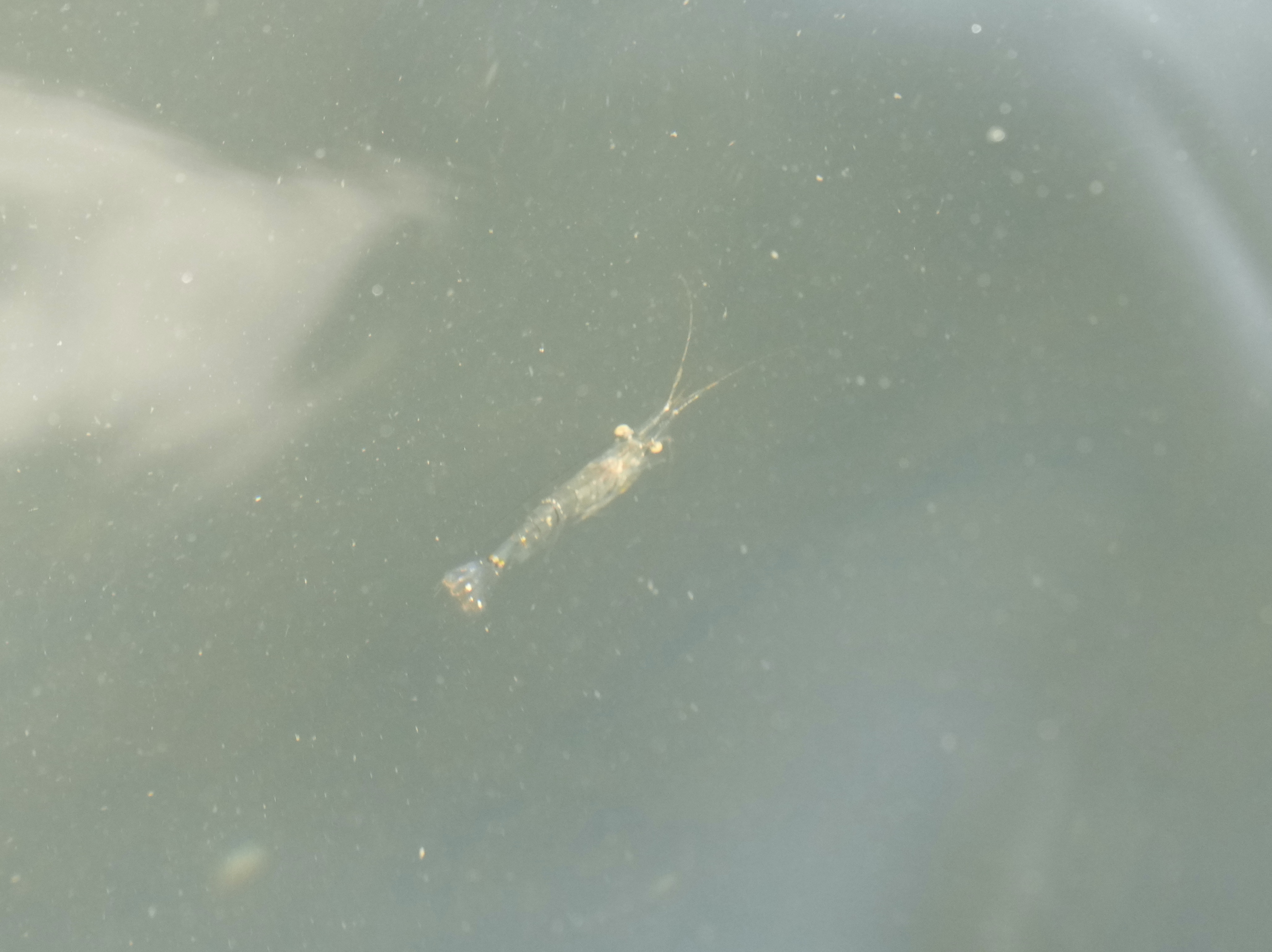
Havnen bød også på en Hvid Vipstjert (White Wagtail), inden vi kørte nordpå igen. Vi gjorde kort stop ved Jerup Strand for at se, om der stadig var fugle der, men også Jerup Strand var tømt for vadefugle. Vi ses igen næste år!
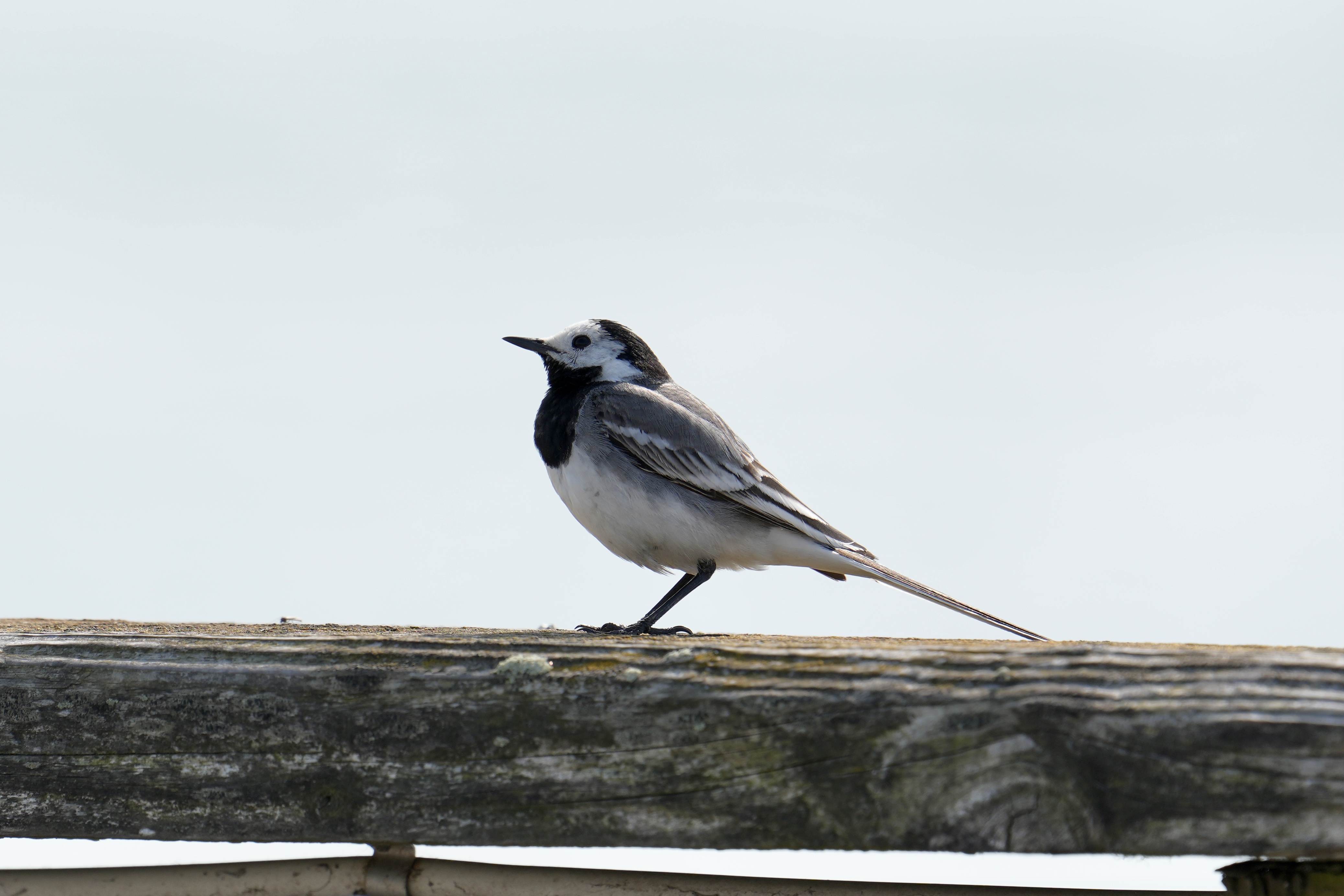 Skagen Fuglestation: Michael Colley, Dante Shepherd, Chloé Meymy, Lauren Evans, Zach Pannifer, Oluf Lou, Søren & Karen Marie Leth-Nissen.
Skagen Fuglestation: Michael Colley, Dante Shepherd, Chloé Meymy, Lauren Evans, Zach Pannifer, Oluf Lou, Søren & Karen Marie Leth-Nissen.
Skarvkolonien har unger i reden
I dag foregik ringmærkningen ikke ved Kabeltromlen, men ved fuglestationens nye CES (Constant Effort Site), som er en lokalitet med regelmæssig ringmærkning på enkeltdage gennem sæsonen. CES-lokaliteten ligger ved Skarvsøen mellem Nordstrand og Sandormssporet.
Fotos: Søren Leth-Nissen.

De unge frivillige stod derfor i dag op før kl. 3.00 for at nå til Skarvsøen i tide, for spejlnettene skal åbnes før solopgang som i dag var 4.37.
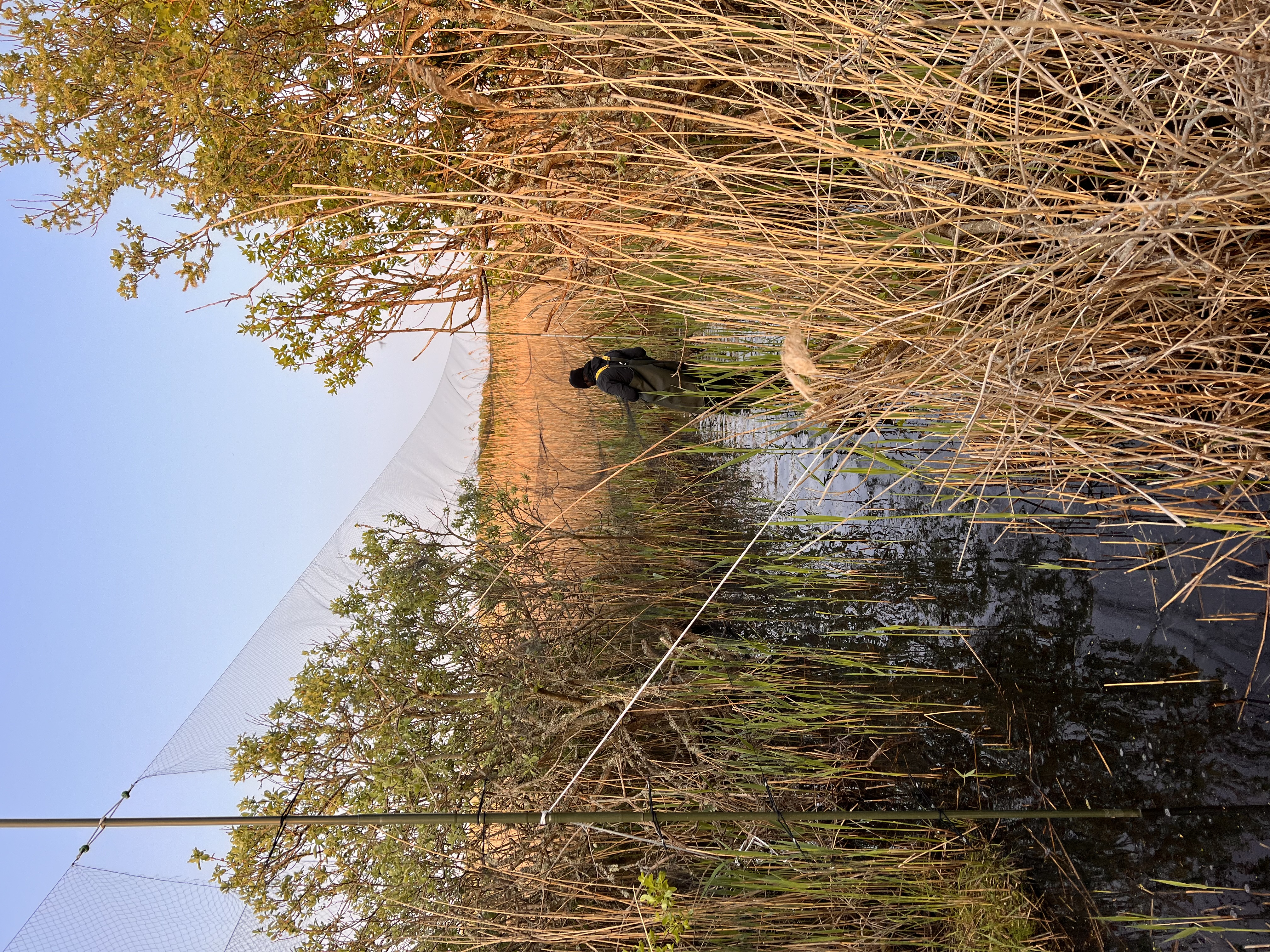
Det lykkedes, og Lauren, Michael og Chloe havde heldet med sig og fik både en Vandrikse (Water Rail) og en Gul Vipstjert ssp. thunbergi (Yellow Wagtail) i nettet og ringmærket. Det var Chloes første voksne, udfarvede gule vipstjert, og samtidig også første gang Skagen Fuglestation har sat ring på en gul vipstjert (thunbergi).
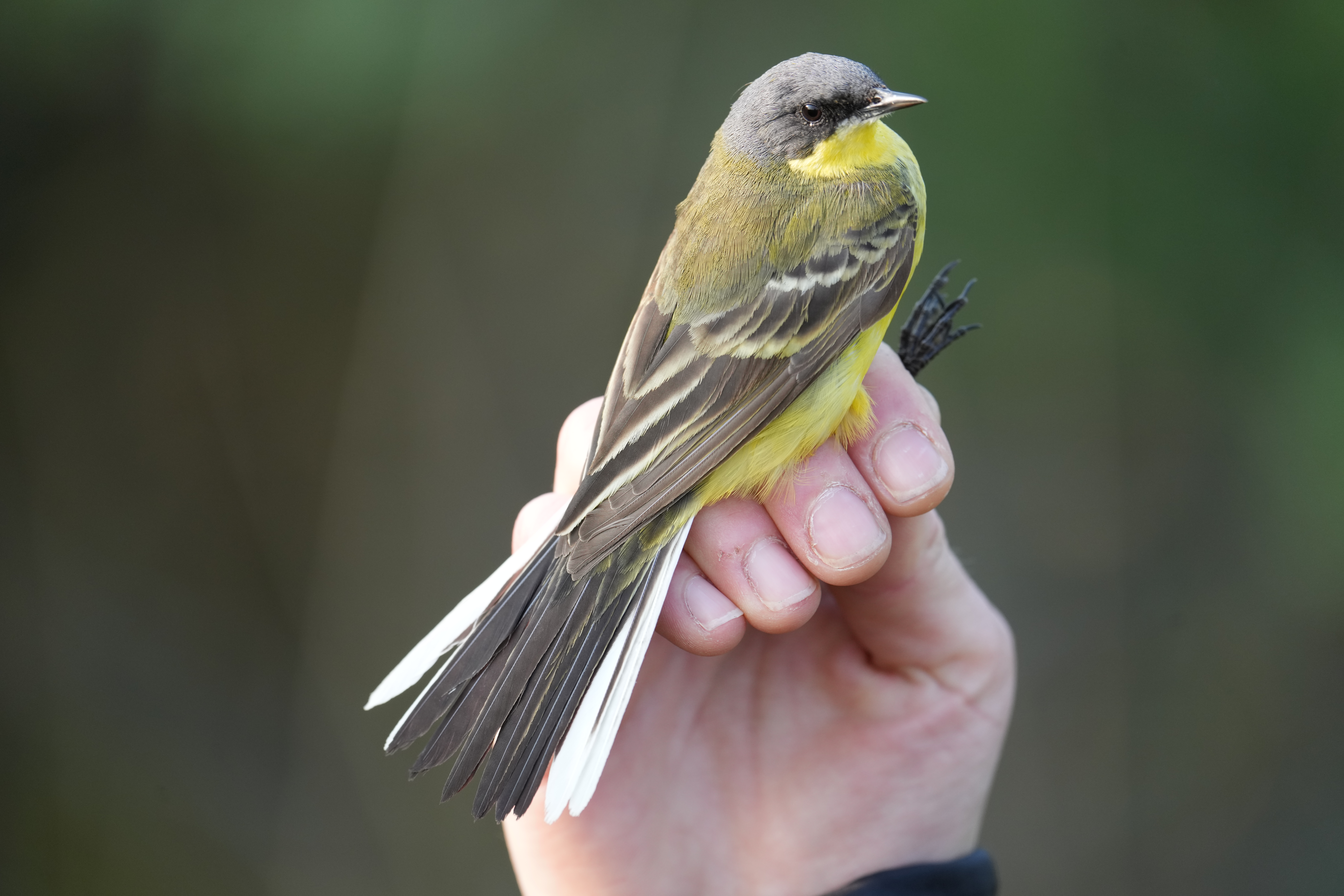
Dante og Zach observerede fugletræk hele morgenen fra Verdens Ende III. Zach’s store øjeblik i dag var synet af en Dværgfalk (Merlin), som sad i kort afstand fra ham i hele 20 minutter. Dante talte hele 61 Mallemuk i dag, selvom det var en forholdsvis stille dag med ikke mange trækkende fugle. Han så også to Bomlærker (Corn Buntings) og en Spætmejse (Nuthatch).
Om eftermiddagen cyklede Dante en tur i Byfogedskoven i den ende af Skagen. Lauren så efter, om der var kommet unger i svalerederne (Bysvaler/House Martins og Landsvaler/Swallows) ved kiosken på Grenen. Michael tog sig af opsummeringerne af observerede rovfugle for flere dage (raptor summaries). Og så blev der også tid til en lur for alle på stationen.
Søren og jeg nød at være med ved Skarvsøen, og få lov til at følge arbejdet med indsamling af fugle og ringmærkning, deltage i tællinger af unge og voksne fugle i skarvkolonien, og tælle reder med unger i.
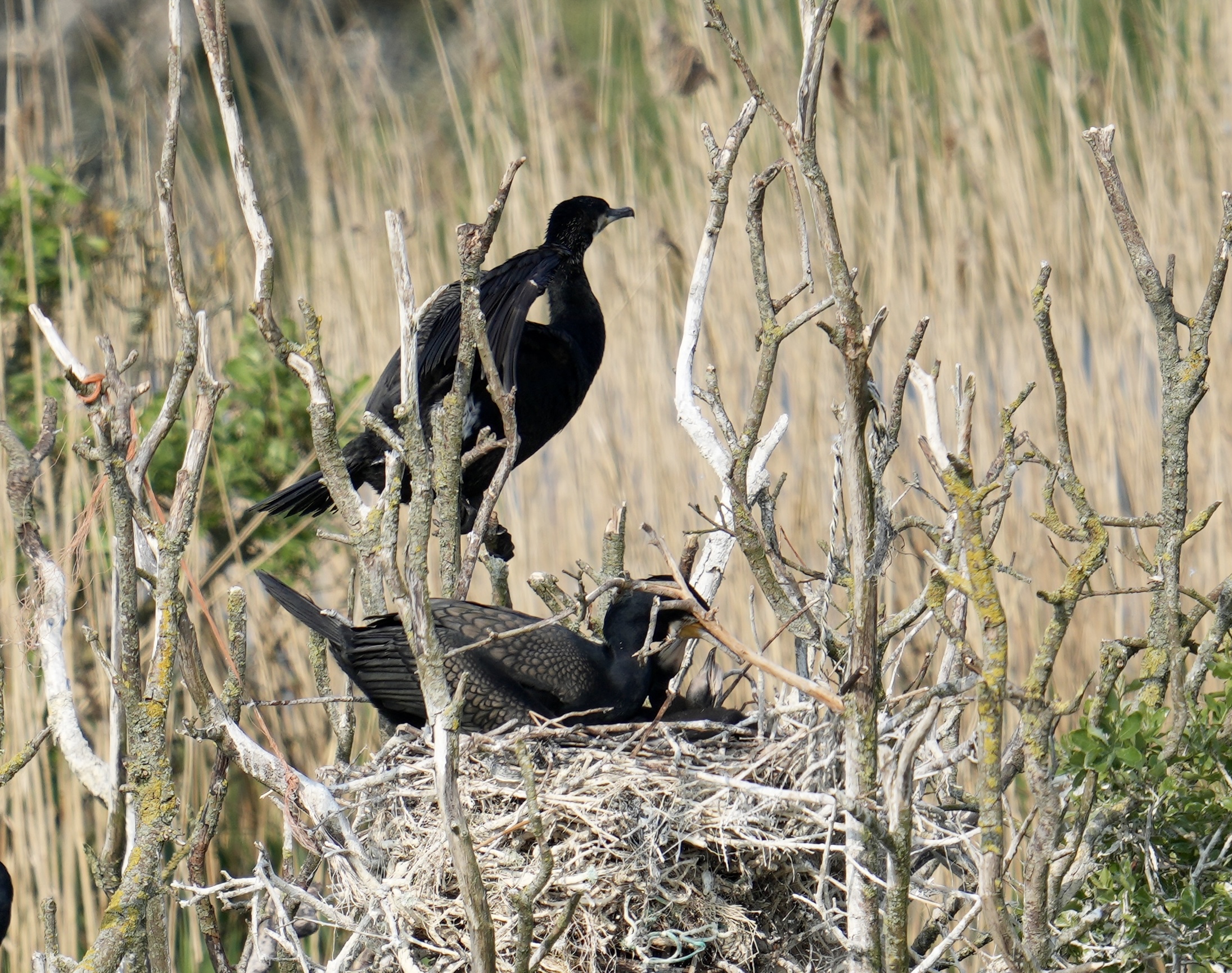
Vi glædede os også over de Gråstrubede Lappedykkere (Red-necked Grebe), Krikænder (Teals), Mudderklirer (Common Sandpiper) for slet ikke at tale om guldsmedene.
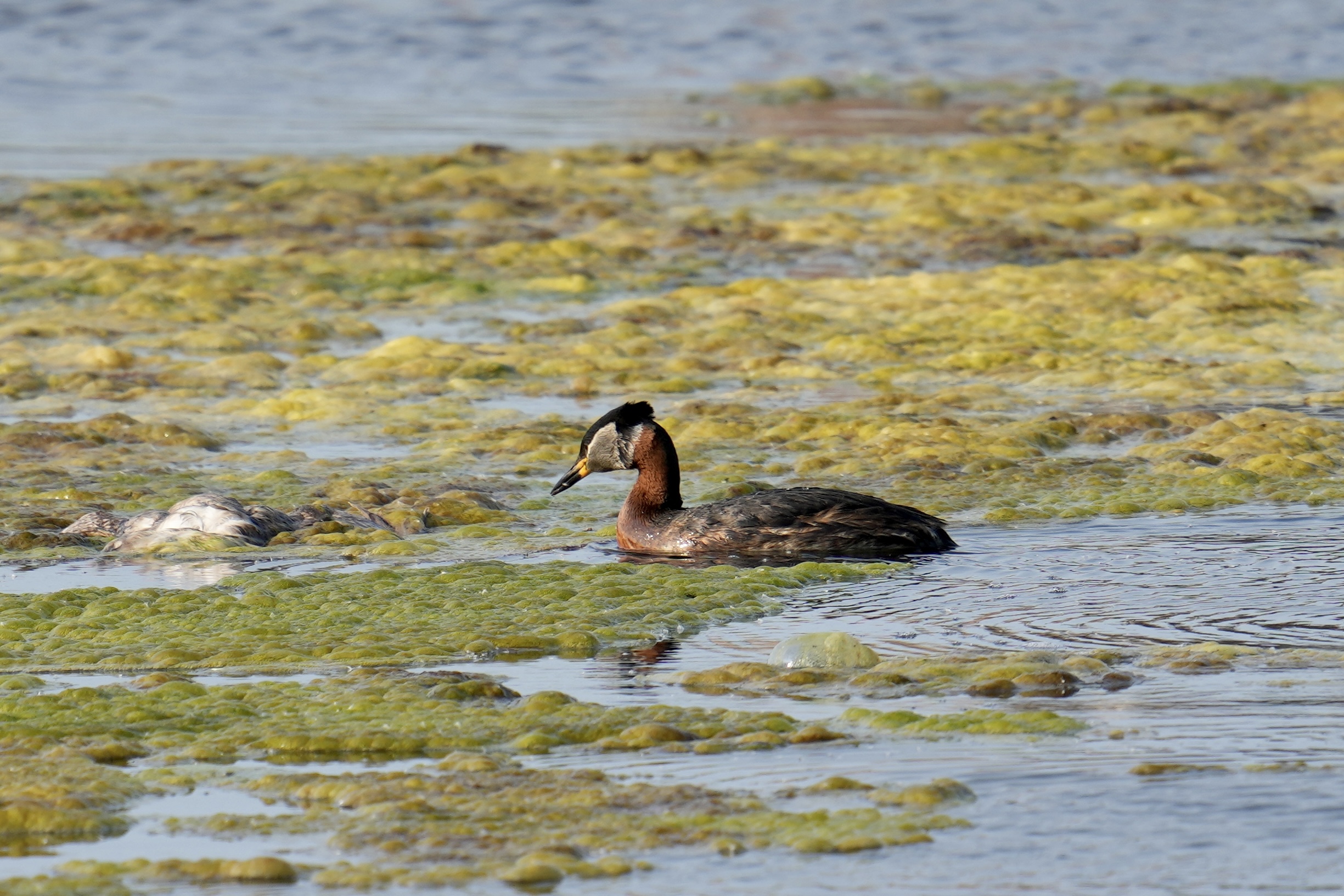
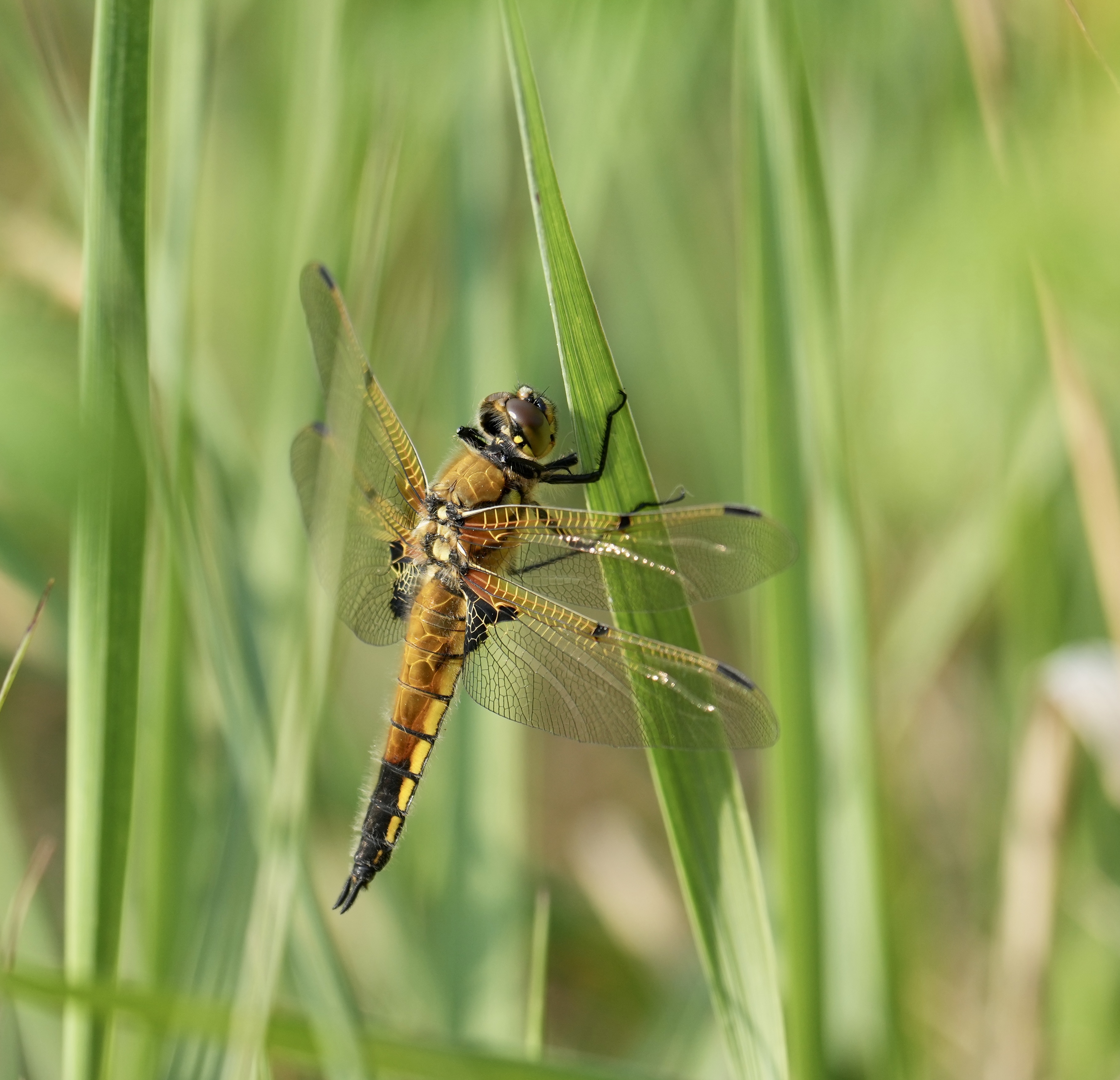 Jeg fik desuden hurtigt brug for min nye viden om gul vipstjert, for om eftermiddagen løb jeg ind i en mindre flok ved rundkørslen på Grenen, og kunne straks se i kikkerten, at der var 5 Gul Vipstjert ssp. thunbergi (Yellow Wagtail) helt voksne og i fuld dragt, sammen med unge fugle og et par hunner. Dejligt at lære af de unge på stationen, og blive lidt klogere på fuglene.
Jeg fik desuden hurtigt brug for min nye viden om gul vipstjert, for om eftermiddagen løb jeg ind i en mindre flok ved rundkørslen på Grenen, og kunne straks se i kikkerten, at der var 5 Gul Vipstjert ssp. thunbergi (Yellow Wagtail) helt voksne og i fuld dragt, sammen med unge fugle og et par hunner. Dejligt at lære af de unge på stationen, og blive lidt klogere på fuglene.
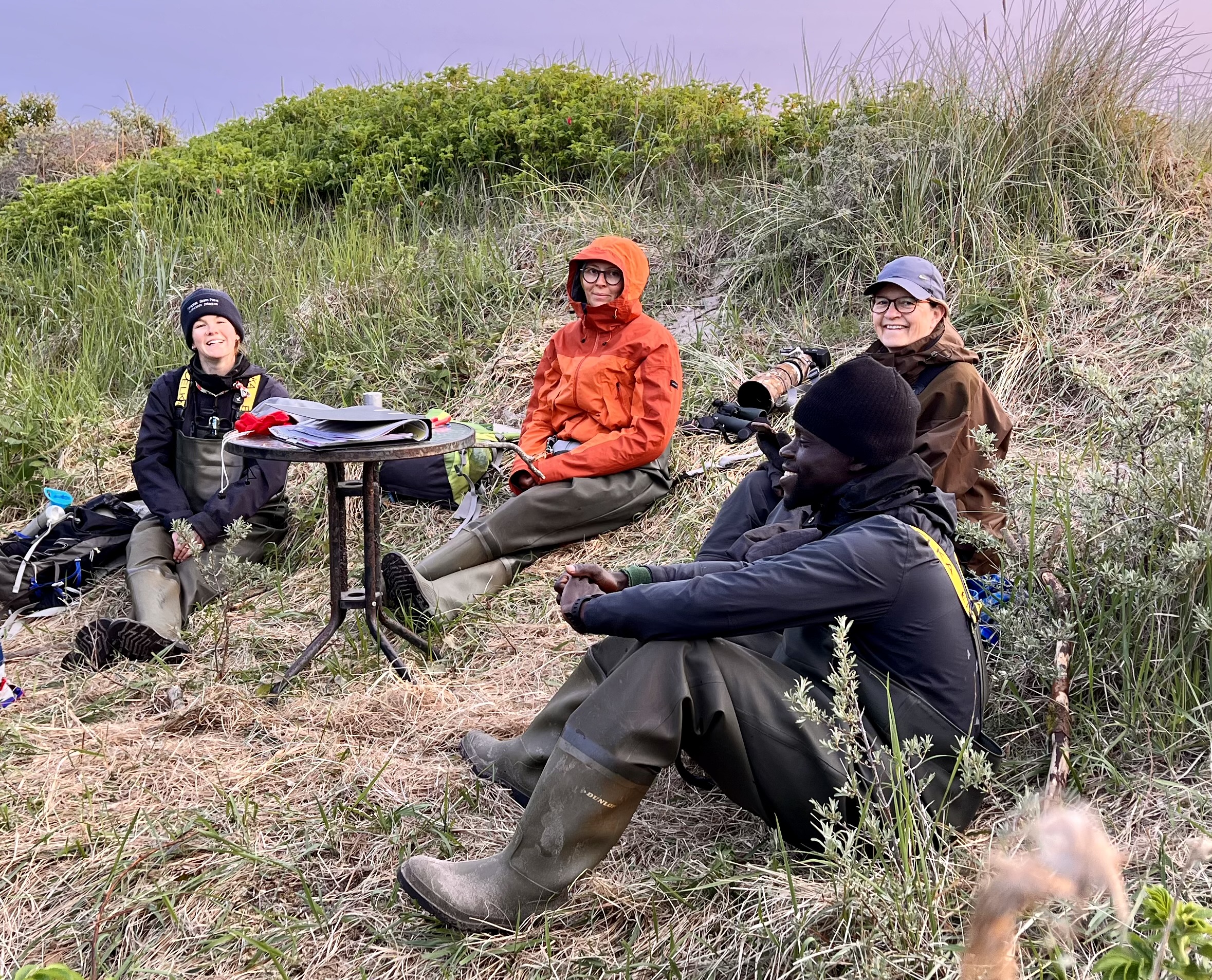
Link til alle dagens observationer i Dofbasen
Skagen Fuglestation: Michael Colley, Dante Shepherd, Chloé Meymy, Lauren Evans, Zach Pannifer, Simon S. Christiansen, Søren & Karen Marie Leth-Nissen.
Ringmærkning (Skarvsøen - CES)
Vandrikse (Water Rail): 1
Gul vipstjert ssp. thunbergi (Yellow Wagtail): 1
Rødhals (Robin): 1
Tornsanger (Common Whitethroat): 1
Rørsanger (Reed Warbler): 5
Gransanger (Chiffchaff): 2
Løvsanger (Willow Warbler): 1
Total: 12
Wren, Icterine Warbler and too much sunshine
As usual, we started the day with a ringing session at Kabeltromlen at sunrise where nets were open at 4:15 am. I was with Lauren and Chloe; we were later joined by Simon and the guests at the apartment, Søren and Karen Marie.
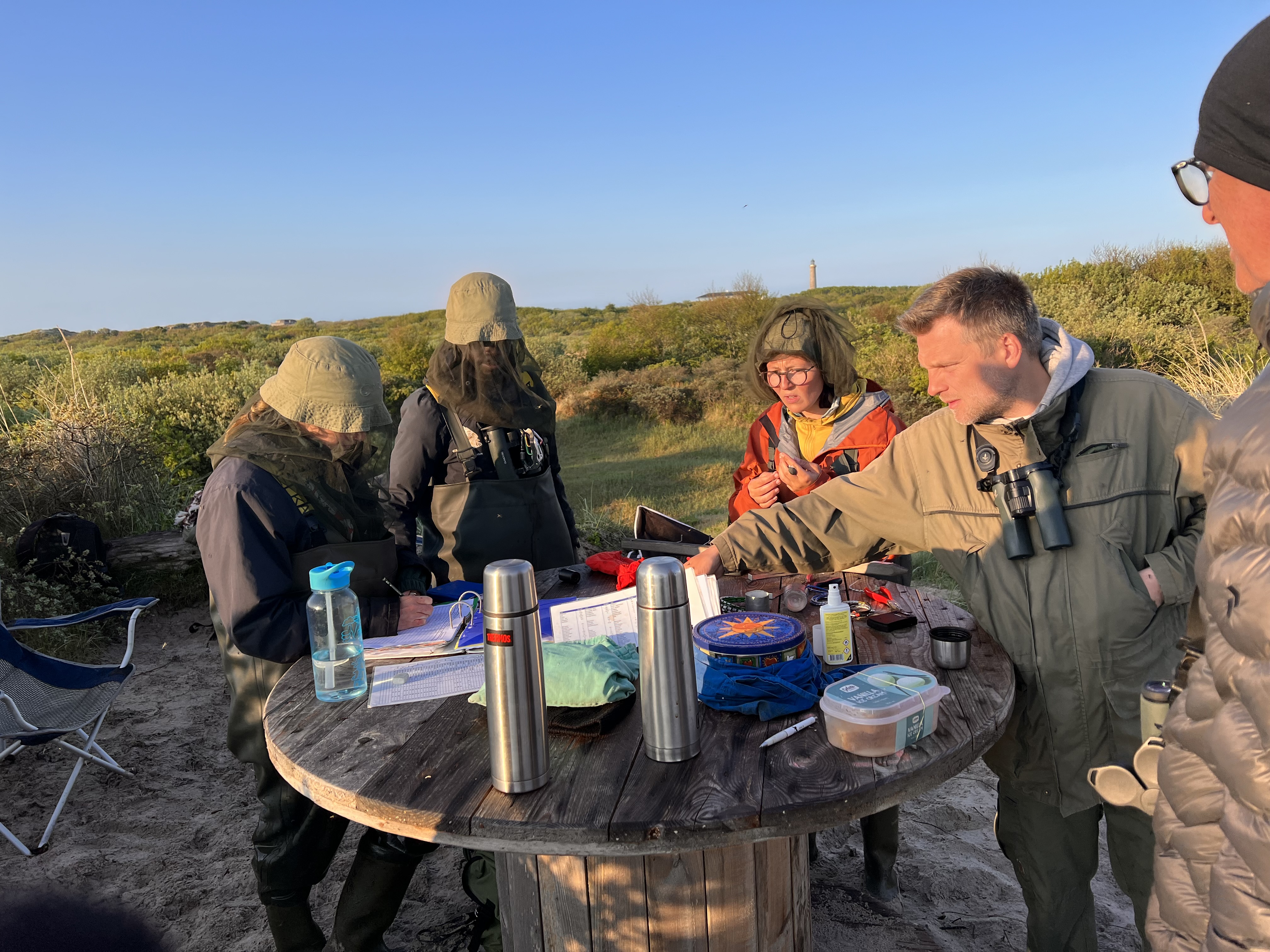 We had a slow morning session with 14 birds of 8 species. But throughout the ringing session we were kept busy by the mosquitoes at Kabeltromlen. The nets were closed by 9:30 because there were only few birds to ring. Sunny weather and almost no wind gives only few birds in the nets - but those we had were great.
We had a slow morning session with 14 birds of 8 species. But throughout the ringing session we were kept busy by the mosquitoes at Kabeltromlen. The nets were closed by 9:30 because there were only few birds to ring. Sunny weather and almost no wind gives only few birds in the nets - but those we had were great.
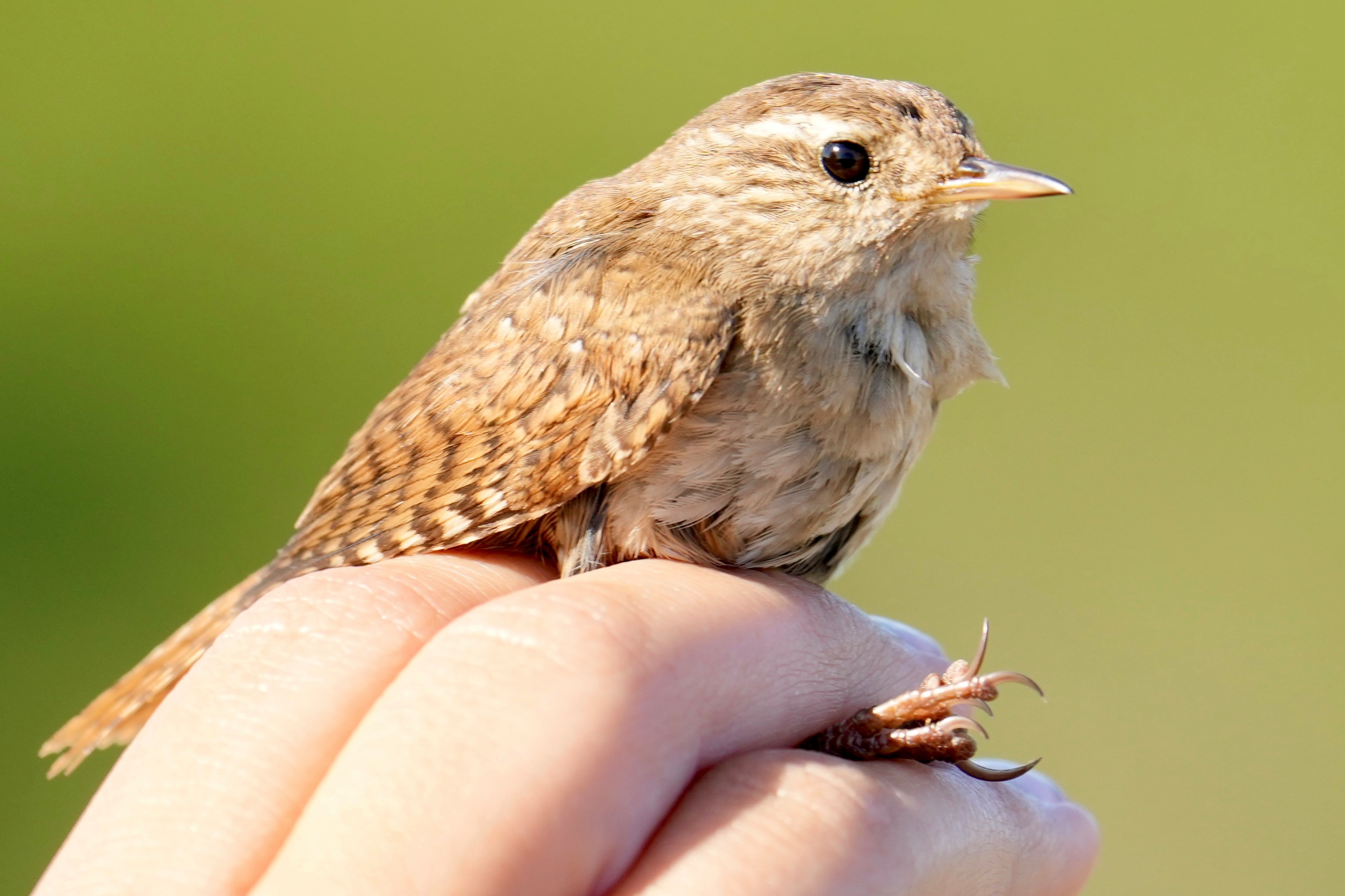
Photos: Søren Leth-Nissen.
Ringing total 14 birds:
Common Whitethroat/ Tornsanger 3
Lesser Whitethroat/ Gærdesanger 4
Chiffchaff/ Gransanger 1
Wren/ Gærdesmutte 1
Pied Fiycatcher / Broget Fluesnapper 1
Icterine warbler/ Gulbug 1
Blackcap/ Munk 2
Garden Warbler/ Havesanger 1
Dante and Zack were at the observation site, they had many birds around but with less migration than other days.
The highlights of the observation this morning:
Rosefinch / Karmindompap 1
Shag / Topskarv 3
Ring Ouzel / Ringdrossel 1
Short-Eared Owl / Mosehornugle 1
Red-Backed Shrike / Rødrygget Tornskade 3
White-tailed Eagle / 1
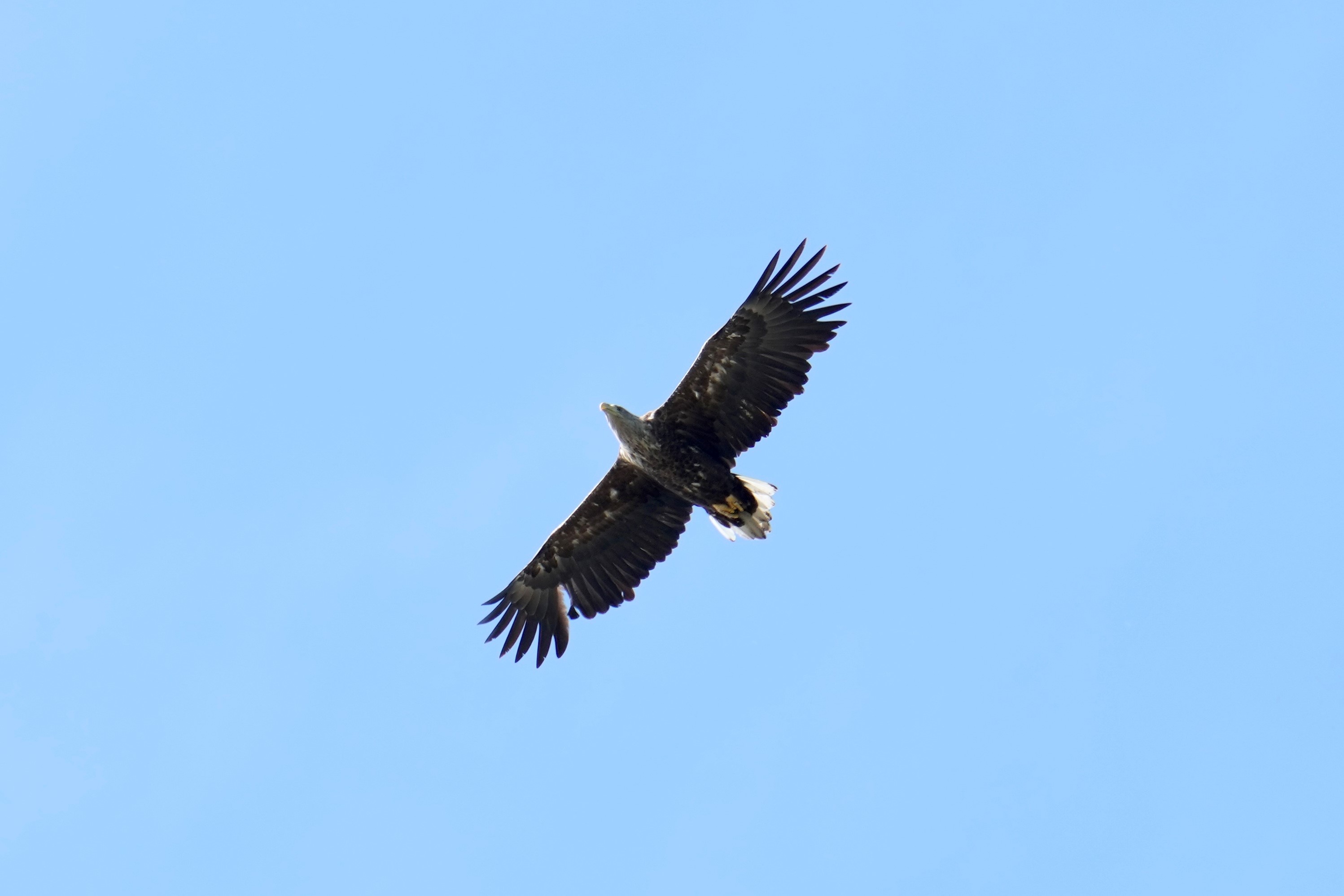
At Skagen Fuglestation:
Michael Colley, Dante Shepherd, Chloé Meymy, Lauren Evans, Zack, Simon S. Christiansen, Søren & Karen Marie Leth-Nissen.
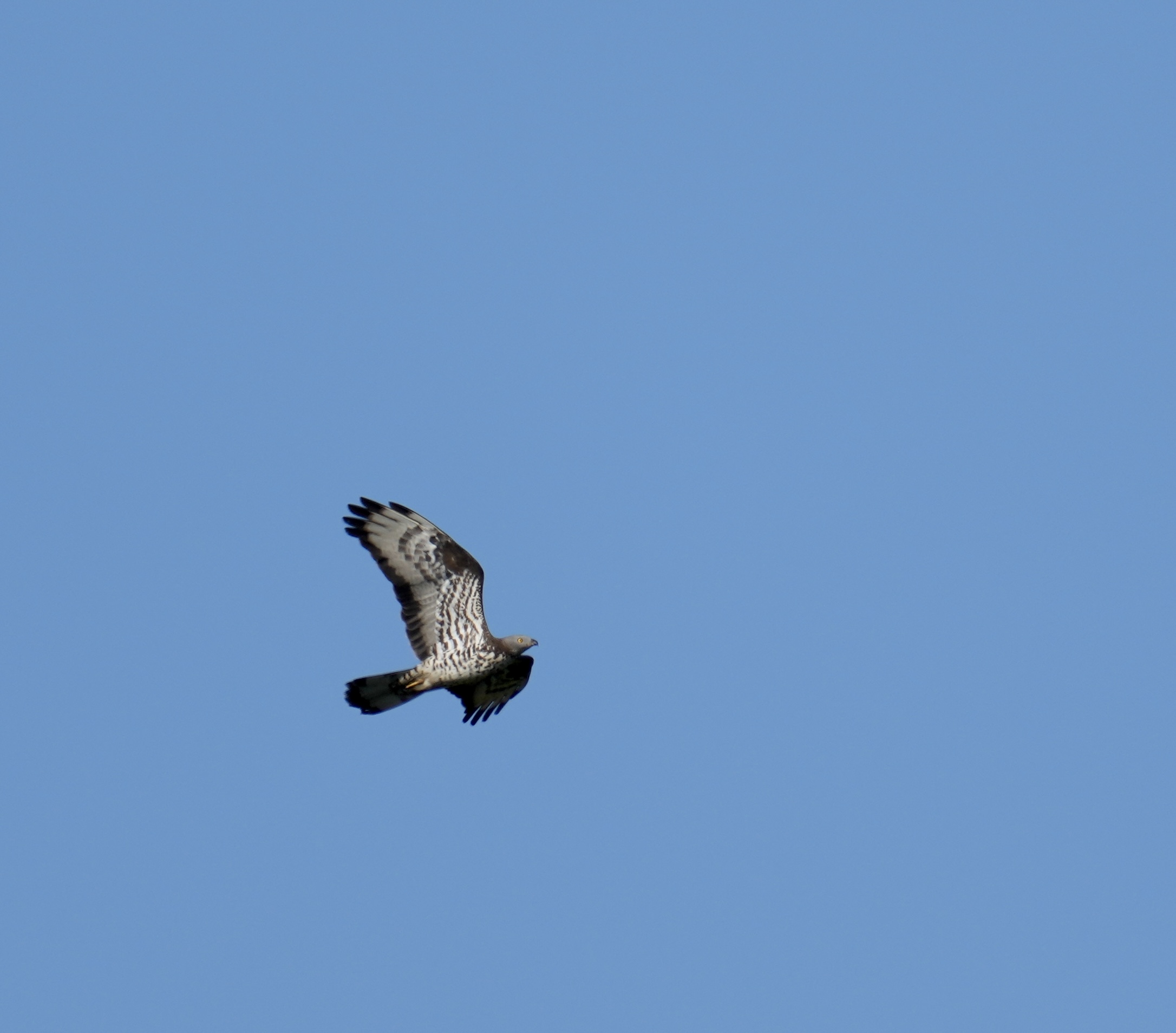
Honey Buzzard/Hvepsevåge observed from Kabeltromlen.
